


Yoga With Rohit Kumar (ONSITE & ONLINE or anyone of these) - Yoga With Rohit Kumar is a unique approach for conducting Yoga programs in India as well as worldwide, under the personal guidance of the founder Rohit Kumar. This opportunity of Yoga education is executed also in collaboration and good faith with interested Yoga Schools/Yoga Studios/Yoga Teachers in India and worldwide.
The lead trainer Rohit Kumar travels across for conducting Yoga teacher training courses, retreats and Yoga classes. Therefore, upon proper enquiry/invitation/collaboration/arrangements we can organize the agreed Yoga courses/retreats/classes in any part of India as well as abroad. We have successfully been able to conduct courses, retreats and various Yoga activities abroad such as in Sweden, Netherlands and Germany etc.
Teacher - In this special service of Yoga,Rohit Kumar is the lead trainer for any Yoga program that will be organized and done. In the special circumstances, there may be more assistant teachers to facilitate the process who will vary according to their availability.
Time Zone – India IST (Delhi, Mumbai) and International (According to the country).
Yoga Programs –
1. Fundamental Yoga Teacher Training Course -
2. Special Yoga Teacher Training Course -
3. Fundamental Retreat -
4. Special Retreat -
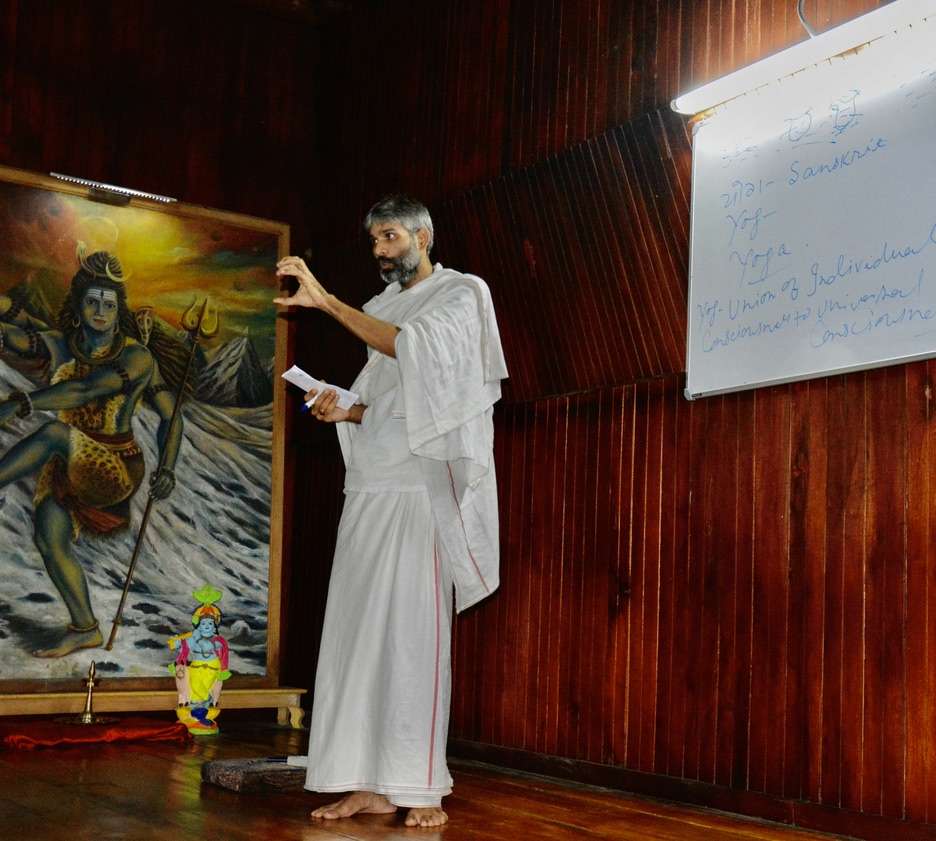

Inclusions - Usually, all Yoga programs in this category include only required classes, education and certification, if relevant.
Additional inclusions - In exceptional circumstances and on certain terms and conditions, we may offer "Accommodation during total duration of the course/retreat, Course material (Books, notebook, pen, Jala Neti pot), private consultation, Vegetarian food, 1 sound healing session (optional), 1 weekend excursions and Wi-fi etc. with some additional fee. This is decided only after communication with the students who make such a request.
Exclusions - Flight tickets, longer tours and trips around, medical assistance and things for personal requirements.
 Special features -
Special features -
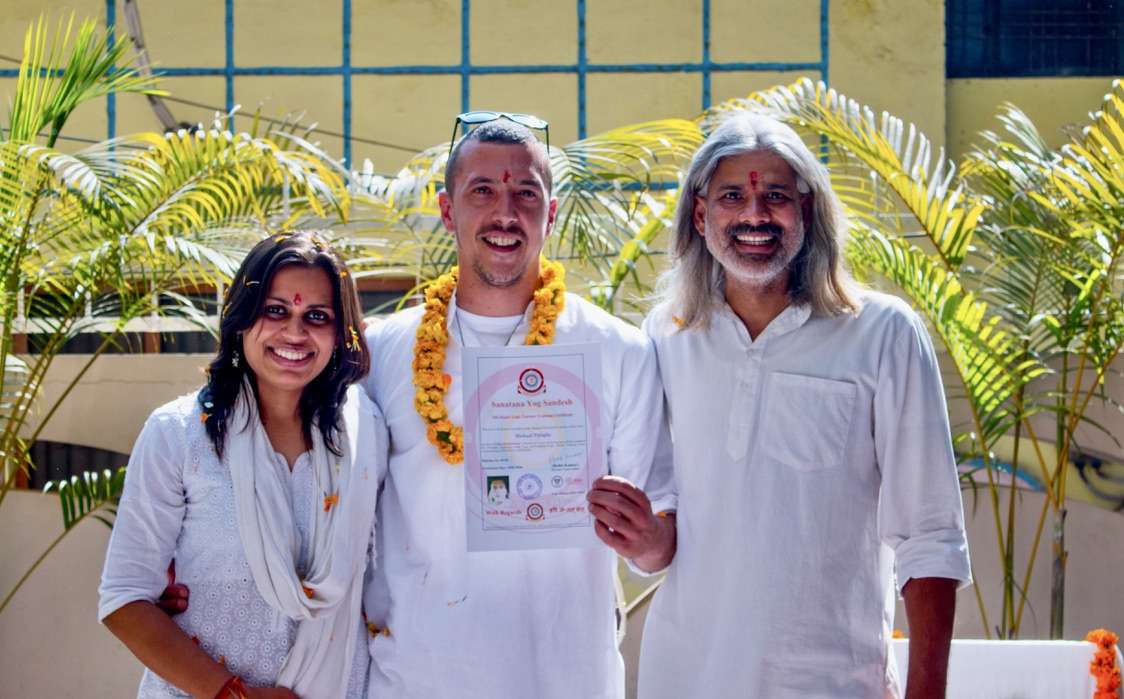 200 Hours Traditional Hatha Yoga Teacher Training Course in Rishikesh India with (up-levelled curriculum) incorporates a variety of topics. All these topics come under these following heads –
200 Hours Traditional Hatha Yoga Teacher Training Course in Rishikesh India with (up-levelled curriculum) incorporates a variety of topics. All these topics come under these following heads –
1. Techniques, Training and Practice – It incorporates various techniques of Hatha Yoga which students will study in the Yoga Teacher Training Course. They are –
Asana – Postures of Hatha Yoga such as preparatory movements of joints, muscles and parts of body, Standing, Supine, Prone – (backward, forward, spine twist), Inversion and Balance at intermediate level.
Pranayama – Udar Svashan, Vaksha Svashan, Griva Svashan, Yogic Svashan, Kapalabhati, Nadi Shodhana, Bhramari and Ujjayi.
Mudra – Gesture of hands, fingers and body to affect energy in body.
Bandha – Practices of locking the energy in body (Jalandhara Bandha).
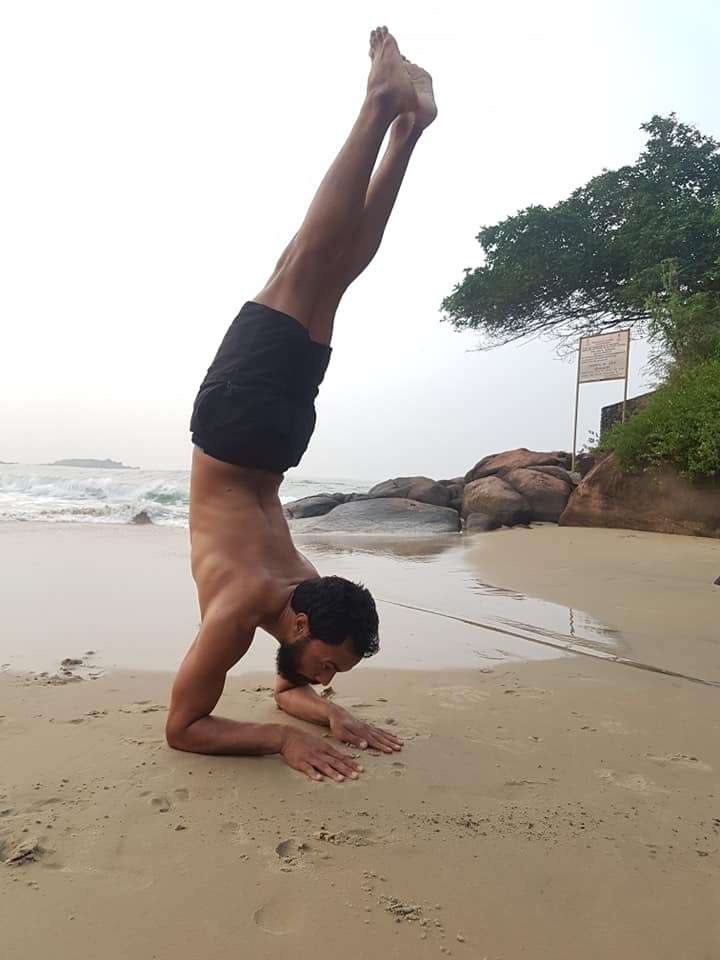 Satkarma – Practices for purification of body in Yoga (Jala Neti).
Satkarma – Practices for purification of body in Yoga (Jala Neti).
Meditation – Fundamental practices of Yoga Nidra, Yogic breathing with awareness, Fundamental practices of developing awareness, Kaya asthairyam (stillness of body), Awareness of natural breath, Awareness of peace, Antarmouna (inner silence) with awareness of natural sensory responses and awareness of natural thought process and Developing awareness with mantra such as AUM.
Chanting – Chanting and practice of important holy syllables for well-being and auspiciousness in life.
Singing Bowls – Practice of sound awareness and sound experience.
2. Anatomy and Physiology –
Anatomy – Skeleton system (major bones, types of joints, major muscles involved in asana and types of contraction).
Physiology – Nervous system including ‘fight, flight, freeze’ stress response, Vagal theory, Overall mind-body connection, Cardiovascular/Circulatory, Endocrine, Digestive systems as they relate to Yoga practice, Respiratory system including muscles that affect breathing, Involuntary vs. voluntary breath and how air enters and leaves the body.
Biomechanics – Types of joint movement, Joint stabilization, Safe movement as it pertains to balancing, stretching, awareness and physical limitations, Contraindications, Misalignments and adaptations.
Elective – Additional study on modern physio about bones, joints, muscles and their movements.
Additional topics – Shared anatomical and alignment principles plus contraindications, Effects of Pranayama on anatomy and subtle body, Complete sequencing of pranayama including alternatives and adaptations, Different types of Pranayama and Ayurveda tri-dosha basic knowledge.
3. Yoga Humanities –
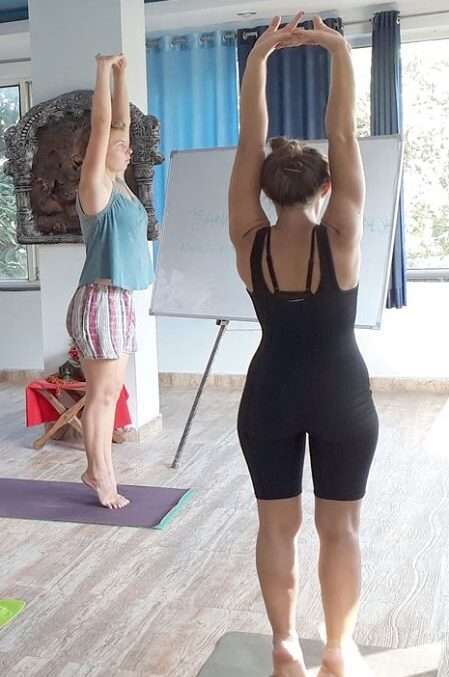 History – Yoga and its meaning, Historical perspective of Yoga, Yoga in ancient texts, School’s lineage, style and methodology, Important dates and key ideas – Vedic period, Pre-classical era, Classical era, Middle Ages, Hatha Yoga 11 Century, Colonial era, Modern revival – 19th century with Swami Vivekananda and other great saints and Yogis, Veda, Vedanta and Hatha, Historical context of Asana, specific Asana from the school’s lineage, Historical context of Pranayama, Meditation methods by lineage and Ability to practice school’s chosen meditation practice.
History – Yoga and its meaning, Historical perspective of Yoga, Yoga in ancient texts, School’s lineage, style and methodology, Important dates and key ideas – Vedic period, Pre-classical era, Classical era, Middle Ages, Hatha Yoga 11 Century, Colonial era, Modern revival – 19th century with Swami Vivekananda and other great saints and Yogis, Veda, Vedanta and Hatha, Historical context of Asana, specific Asana from the school’s lineage, Historical context of Pranayama, Meditation methods by lineage and Ability to practice school’s chosen meditation practice.
Philosophy – Definition of Yoga, philosophy and key terms, Tradition of Yoga, Important scriptures of Yoga, Important Darshan (schools of philosophy), Branches of Yoga (Gyana Yoga, Karma Yoga, Bhakti Yoga, Raja Yoga, Hatha Yoga, Swara Yoga, Kundalini Yoga, Kriya Yoga, Nada Yoga and Mantra Yoga), Brahman and Atman, Yuga (Age) and its characteristics, Individual existence (Sharira Traya, Pancha Tattva, Gyanendriya and Karmendriya, Antahkaran, Triguna, Pancha Kosha, Nadi, Prana Vayu, Chakra and Kundalini), Sad Bhava Vikar (Six modifications of body), Sadurmi (Six waves), Sadripu (Six enemies), Karma, Mrityu and Punarjanma (Death and reincarnation), Mukti, Important topics from Yoga Sutra of Patanjali (Introduction of the four chapters, Anushashan, Chitta, Vritti, Swarupa, AUM and Asta anga of Yoga), Key terms of meditation, Japa, Mantra, Mudra, Relationship between Asana, Pranayama and meditation with reference from Yoga sutra and according to school’s approach, Relationship, message and similarity between Yoga Sutra, Bhagavad Gita and Hatha Yoga Pradipika and Self-reflection on how philosophy relates to practice.
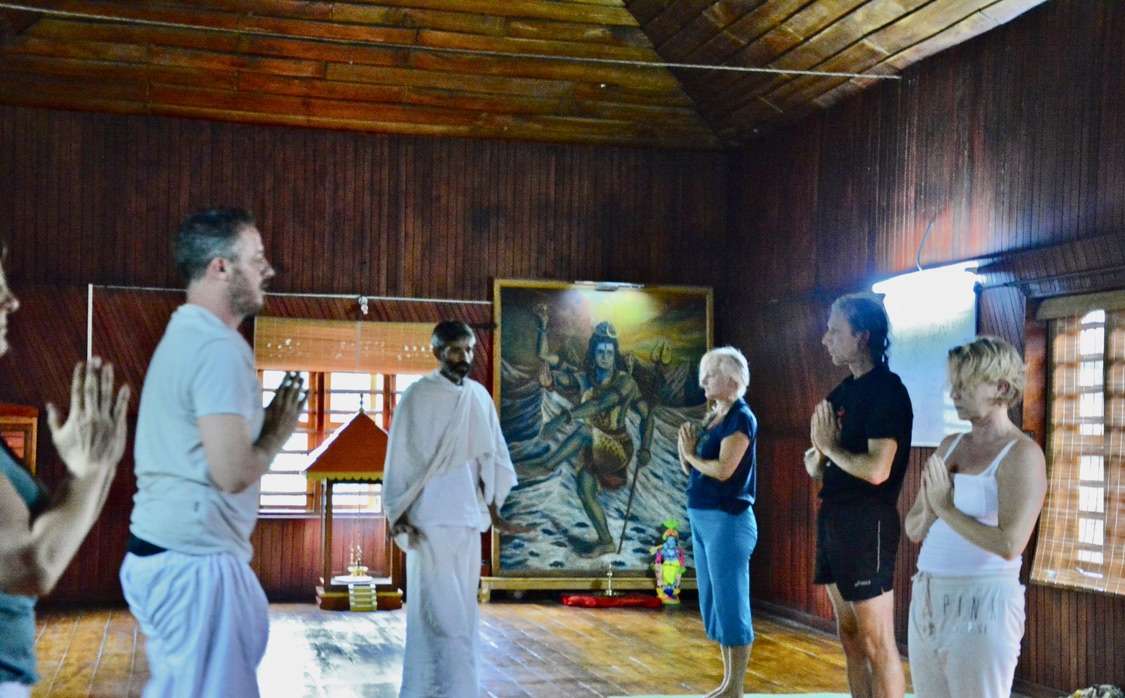 Ethics – Awareness of Yoga Sutras or similar Yogic ethical precepts, Relationship to Yoga Alliance’s ethical commitment, Comprehension of and responsibility to increase equity in Yoga, Accountability measures, Self-reflection on how Yoga ethics relate to practice and Teaching.
Ethics – Awareness of Yoga Sutras or similar Yogic ethical precepts, Relationship to Yoga Alliance’s ethical commitment, Comprehension of and responsibility to increase equity in Yoga, Accountability measures, Self-reflection on how Yoga ethics relate to practice and Teaching.
Elective – Aum definition, Aum sound and Inner sound awareness.
4. Professional Essentials –
Teaching Methodology – Sequencing, Pace, Environment, Cueing (verbal, visual, physical) and class management.
Professional Development – Yoga-related professional organizations including the Yoga Alliance credentialing process, Ethical commitment including scope of practice, Code of conduct and equity position statement, Lifetime of learning and continuing education, General professionalism including timeliness, consistency and cleanliness and liability insurance, waivers and invoicing.
Elective – Marketing tools, Online Yoga business, Websites, Promotion, Profession and Career.
Practicum – Knowledge, Skills, Experience across 12 key competencies, Mentorship component including apprenticeship and Feedback.
Additional topics – Complete sequencing (Asana, Pranayama and Meditation) to achieve particular effect.
Suggested Yoga Books for 200 Hours Traditional Hatha Yoga Teacher Training Course –
Asana Pranayama Mudra Bandha – Swami Satyananda Saraswati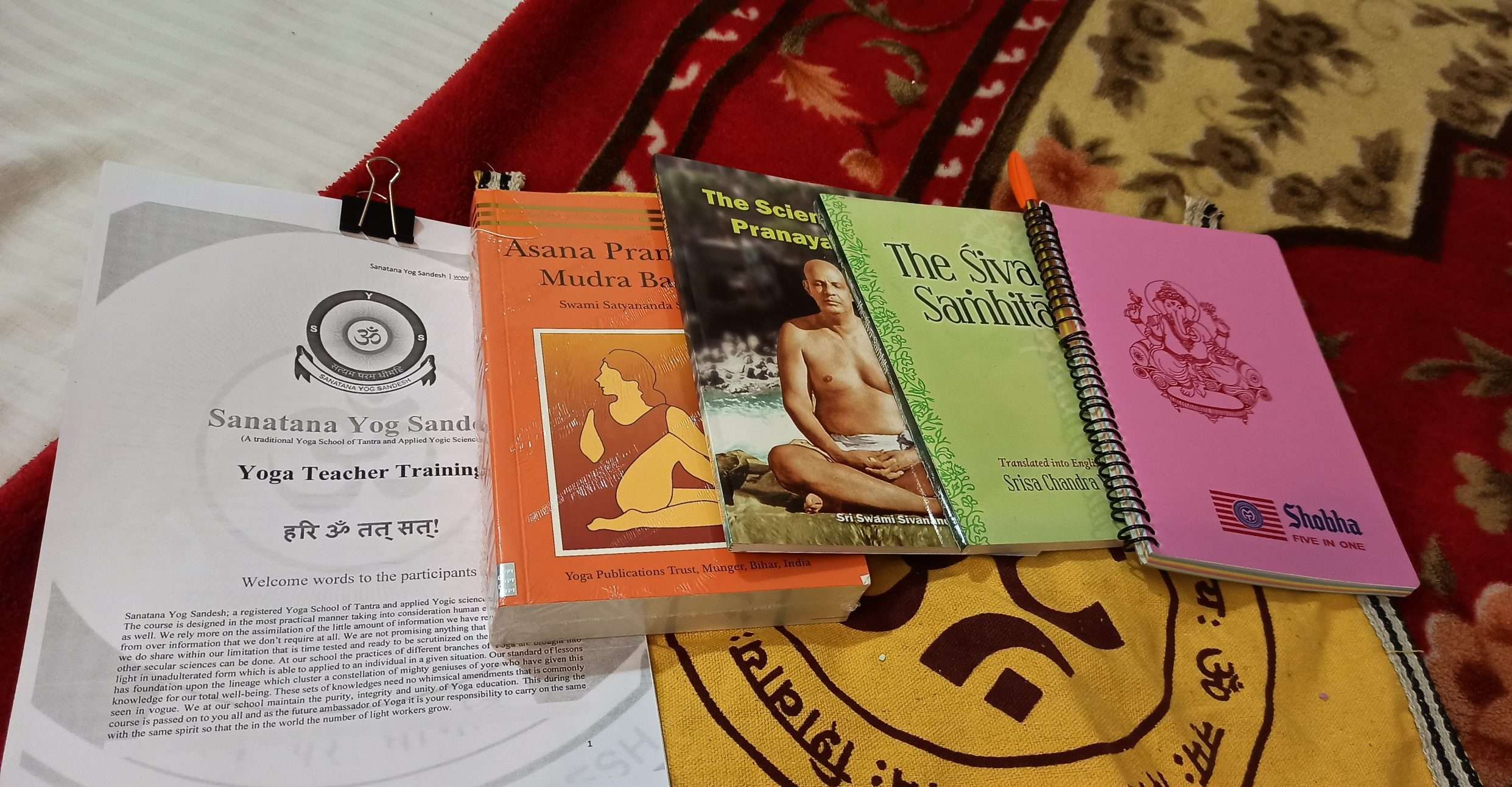
Raja Yoga – Swami Vivekananda or
Four Chapters on freedom – Swami Satyananda Saraswati
Yoga Darshan – Swami Niranjanananda Saraswati
Anatomy and Physiology – Not specified
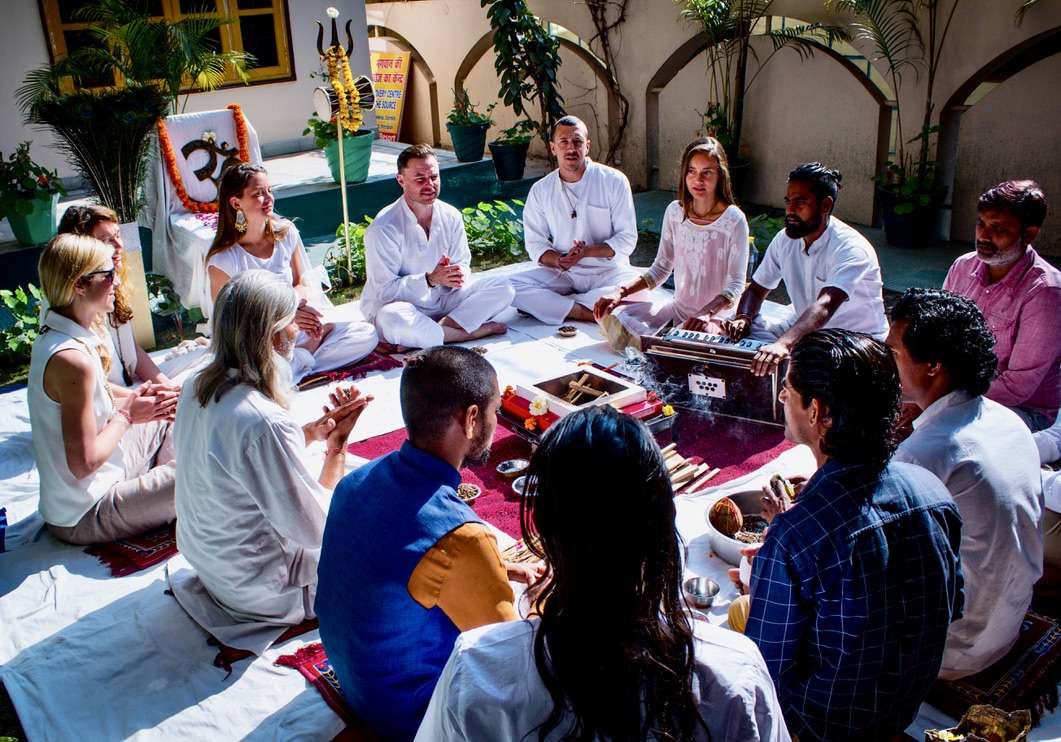 300 Hours Traditional Hatha Yoga Teacher Training Course in Rishikesh India incorporates a variety of topics. All these topics come under these following heads –
300 Hours Traditional Hatha Yoga Teacher Training Course in Rishikesh India incorporates a variety of topics. All these topics come under these following heads –
1. Techniques, Training and Practice – It incorporates several practices of Hatha Yoga which students will study in the Yoga Teacher Training Course. They are –
Asana – Postures of Hatha Yoga such as Standing, Supine, Prone – (backward, forward, spine twist), Inversion and Balance at intermediate and advance level.
Pranayama – Udar Svashan, Vaksha Svashan, Griva Svashan, Yogic Svashan, Kapalabhati, Bhastika, Nadi Shodhana, Sheetali, Sheetkari, Bhramari and Ujjayi. In addition, altogether 12 classical Pranayama.
Mudra – Specific, selected and important gesture to affect energy in body.
Bandha – Important locks to block the flow of energy in body (Jalandhara Bandha, Uddiyana Bandha and Moola Bandha).
Satkarma – Purificatory practices in Yoga (Laghu Sankhaprakshalana, Vaman, Jala Neti and Sutra Neti).
Meditation – Intermediate practices of Yoga Nidra, Intermediate Kaya asthairyam (stillness of body), Intermediate awarenss of breath, Antarmouna (inner slience) with conscious creation and disposal of thought and awareness and disposal of spontaneous thoughts, Japa (chanting) of sacred mantra or holy syllables with rosary, Ajapa Japa (spontaneous chanting) with awareness of frontal psychic passage and awareness of frontal psychic passage with SOHAM, Fundamental Dharana (concentration) practices and concentration with sacred mantra, Trataka (gazing) and Group meditation for universal peace and harmony.
2. Teaching Methodology – This is a combination of complex topics such as Designing Yoga class, How to teach different practices of Yoga, How to be good Yoga teacher, Ethical guidelines, Develop communication skills, Time management, Principles of demonstration, Assistance, Awareness, Correction, Styles of teaching, Specific needs of individuals in a Yoga class and Business aspects of Yoga teaching etc.
3. Anatomy and Physiology –
(a) Modern human anatomy and physiology – Overview and additional details of (Skeleton, Muscular, Digestive, Respiratory, Cardiovascular, Endocrine and Nervous system), Urinary system and Reproductive system (female and male), Immune System, Important Joints and their movements in different Asana and Important muscles and their movements in different Asana.
(b) Yoga human anatomy and physiology – Discussion on Human body according to Hatha Yoga and its relation to the study of human body in modern study regarding 3 Bodies, 5 elements, 5 Kosha, Prana, Mind, 5 Sense organs and 5 Motor organs, Nadi, Chakra and Kundalini.
(c) Holistic approach of Yoga – Learning how the system of Hatha Yoga needs to be incorporated for human well-being of body, mind, emotion and spirit.
4. Yoga Philosophy, Lifestyle and Ethics for Yoga Teachers – Overview of the fundamental topics from 200 Hours Hatha Yoga Teacher Training Course, Sristi (Creation) and Pralaya (Dissolution), Concept of Dharma, Dharma and Karma relation, Religion and its true essence with reference to comparative study of different faiths of the world, Hinduism – a way of living with reference to other ism’s as ways of living, Reflection on the life of great Gurus of different parts of the world with special reference to Swami Vivekananda, Bhakti Yoga as the Yoga of Kaliyuga, Yogic lifestyle, Ethics for a Yoga Teacher, Ethical guidelines as an individual and as a Yoga teacher and Yoga Sutra of Patanjali (important topics from all four chapters – Samadhi Pada, Sadhana Pada, Vibhuti Pada and Kaivalya Pada).
5. Practicum – Practice of teaching different practices in groups as the lead instructor, Observe and assist while others teaching, Focus on specific practices and Compiling feedback etc.
Suggested Yoga Books for 300 Hours Traditional Hatha Yoga Teacher Training Course –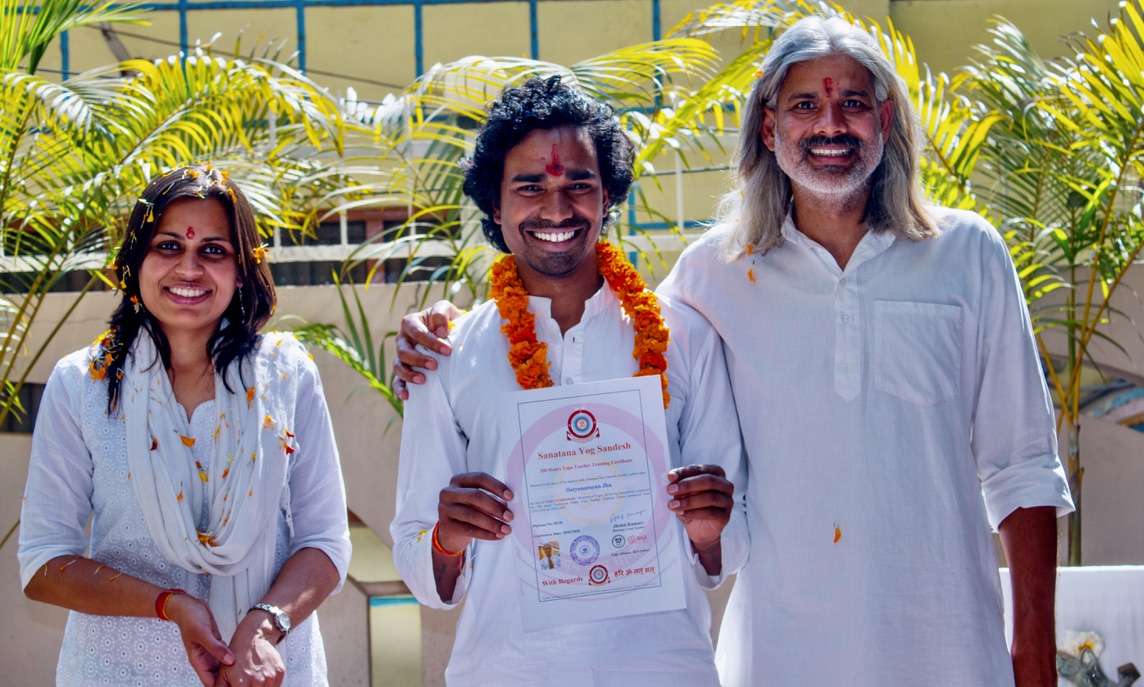
Asana Pranayama Mudra Bandha – Swami Satyananda Saraswati
Raja Yoga – Swami Vivekananda or
Four Chapters on Freedom – Swami Satyananda Saraswati
Yoga Darshan – Swami Niranjanananda Saraswati
Anatomy and Physiology – Not specified
 500 Hours Traditional Hatha Yoga Teacher Training Course in Rishikesh India (Split into 200 hours and 300 hours) incorporates a variety of topics. All these topics come under these following heads –
500 Hours Traditional Hatha Yoga Teacher Training Course in Rishikesh India (Split into 200 hours and 300 hours) incorporates a variety of topics. All these topics come under these following heads –
1. Techniques, Training and Practice – It incorporates several practices of Hatha Yoga which students will study in the Yoga Teacher Training Course. They are –
Asana – Postures of Hatha Yoga such as preparatory movements of joints, muscles and parts of body, Standing, Supine, Prone – (backward, forward, spine twist), Inversion and Balance at intermediate and advance level.
Pranayama – Udar Svashan, Vaksha Svashan, Griva Svashan, Yogic Svashan, Kapalabhati, Bhastika, Nadi Shodhana, Sheetali, Sheetkari, Bhramari and Ujjayi. In addition, altogether 12 classical Pranayama.
Mudra – Specific, selected and important gesture to affect energy in body.
Bandha – Important locks to block the flow of energy in body (Jalandhara Bandha, Uddiyana Bandha and Moola Bandha).
Satkarma – Purificatory practices in Yoga (Laghu Sankhaprakshalana, Vaman, Jala Neti and Sutra Neti).
Meditation – Fundamental and intermediate practices of Yoga Nidra, Yogic breathing with awareness, Fundamental practices of developing awareness, Kaya asthairyam (stillness of body) and its intermediate level, Awareness of natural breath and its intermediate level, Awareness of peace, Antarmouna (inner silence) with awareness of natural sensory responses, awareness of natural thought process, conscious creation and disposal of thought and awareness and disposal of spontaneous thoughts, Japa (chanting) of sacred mantra or holy syllables with rosary, Ajapa Japa (spontaneous chanting) with awareness of frontal psychic passage and awareness of frontal psychic passage with SOHAM, Developing awareness with mantra such as AUM, Fundamental Dharana (concentration) practices and concentration with sacred mantra, Trataka (gazing) and Group meditation for universal peace and harmony.
2. Teaching Methodology – This is a combination of complex topics such as Designing Yoga class, How to teach different practices of Yoga, How to be good Yoga teacher, Ethical guidelines, Develop communication skills, Time management, Principles of demonstration, Assistance, Awareness, Correction, Styles of teaching, Specific needs of individuals in a Yoga class and Business aspects of Yoga teaching etc.
3. Anatomy and Physiology –
(a) Modern human anatomy and physiology – Skeleton system, Muscular system, Digestive system Respiratory system, Cardiovascular System, Urinary and Reproductive system (Female and male), Endocrine system, Immune system, important Joints and their movements in different Asana and important muscles and their movements in different Asana.
(b) Yoga human anatomy and physiology – Discussion on Human body according to Hatha Yoga and its relation to the study of human body in modern study regarding 3 Bodies, 5 elements, 5 Kosha, Prana, Mind, 5 Sense organs and 5 Motor organs, Nadi, Chakra and Kundalini.
(c) Holistic approach of Yoga – Learning how the system of Hatha Yoga needs to be incorporated for human well-being of body, mind, emotion and spirit.
4. Yoga Philosophy, Lifestyle and Ethics for Yoga Teachers –
History – The term ‘Yoga’, Historical perspective of Yoga, Yoga in ancient texts, School’s lineage, style and methodology, Important dates and key ideas – Vedic period, Pre-classical era, Classical era, Middle Ages, Hatha Yoga 11 Century, Colonial era, Modern revival – 19th century with Swami Vivekananda and other great saints and Yogis, Vedas, Vedanta and Hatha, Historical context of Asana, Specific Asana from the school’s lineage, Historical context of Pranayama, Meditation methods by lineage and Ability to practice school’s chosen meditation practice.
Philosophy – Definition of Yoga, philosophy and key terms, Tradition of Yoga, Important scriptures of Yoga, Important Darshan (schools of philosophy), Branches of Yoga (Gyana Yoga, Karma Yoga, Bhakti Yoga, Raja Yoga, Hatha Yoga, Kundalini Yoga, Kriya Yoga, Nada Yoga, Swara Yoga and Mantra Yoga), Brahman and Atman, Yuga (age) and its characteristics, Individual existence (Sharira Traya, Pancha Tattva, Gyanendriya and Karmendriya, Antahkaran, Triguna, Pancha Kosha, Nadi, Prana Vayu, Chakra and Kundalini), Sad Bhava Vikar (six modifications of body), Sadurmi (six waves), Sadripu (six enemies), Karma, Mrityu and Punarjanma (death and reincarnation), Mukti, Key terms of meditation, Japa, Mantra, Mudra. Relationship between asana, pranayama and meditation with reference from Yoga sutra and according to school’s approach, Relationship, message and similarity between Yoga Sutra, Bhagavad Gita and Hatha Yoga Pradipika, Self-reflection on how philosophy relates to practice, Sristi (Creation) and Pralaya (Dissolution), Concept of Dharma, Dharma and Karma relation, Religion and its true essence with reference to comparative study of different faiths of the world, Hinduism – a way of living with reference to other ism’s as ways of living, reflection on the life of great Gurus of different parts of the world with special reference to Swami Vivekananda, Bhakti Yoga as the Yoga of Kaliyuga, Yogic lifestyle, Ethics for a Yoga Teacher, Ethical guidelines as an individual and as a Yoga teacher and Yoga Sutra of Patanjali (important topics from all four chapters – Samadhi Pada, Sadhana Pada, Vibhuti Pada and Kaivalya Pada).
5. Practicum – Practice of teaching different practices in groups as the lead instructor, Observe and assist while others teaching, Focus on specific practices and Compiling feedback etc.
Suggested Yoga Books for 500 Hours Traditional Hatha Yoga Teacher Training Course –
Asana Pranayama Mudra Bandha – Swami Satyananda Saraswati
Raja Yoga – Swami Vivekananda or
Four Chapters on Freedom – Swami Satyananda Saraswati
Yoga Darshan – Swami Niranjanananda Saraswati
Anatomy and Physiology – Not specified
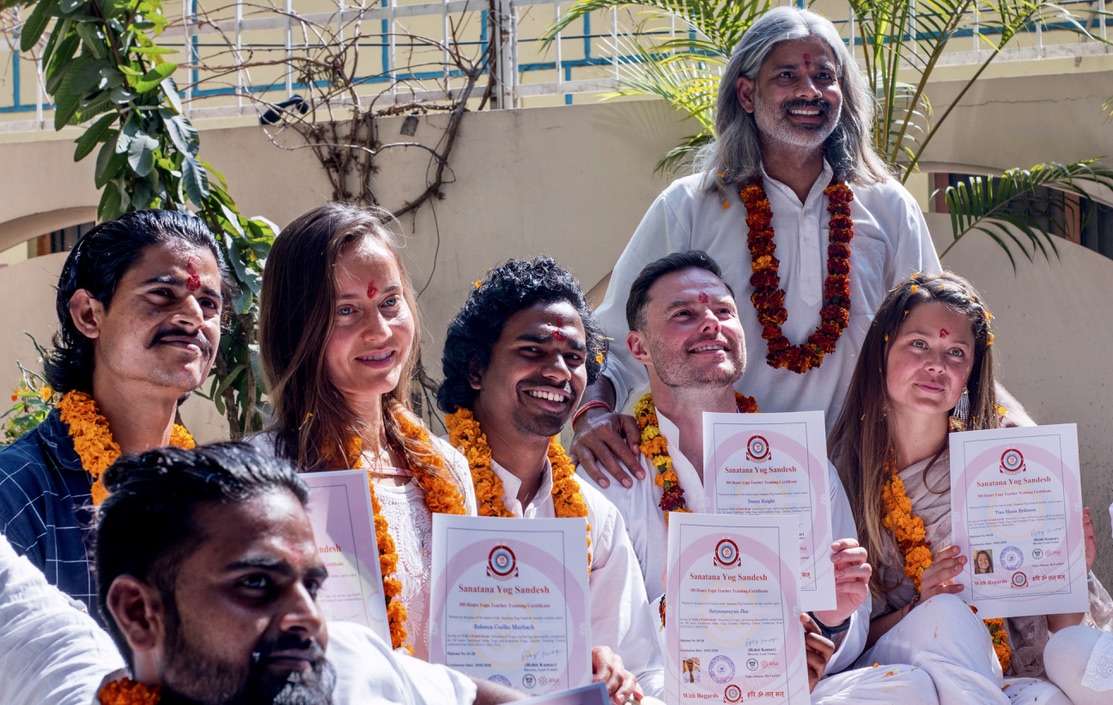 300 Hours Traditional Kriya Yoga Teacher Training Course incorporates a variety of topics. All these topics come under these following heads –
300 Hours Traditional Kriya Yoga Teacher Training Course incorporates a variety of topics. All these topics come under these following heads –
1. Techniques, Training and Practice – It includes several levels of practices with designed orientation, breathing and visualization which students will study in the Kriya Yoga Teacher Training Course. They are –
Special Kriya of Kriya Yoga – 20 special and specific Kriya as taught by Swami Satyananda Saraswati, which forms the essence of Kriya Yoga.
Asana – Very selective and specific postures of Hatha Yoga such as Standing, Supine, Prone – (backward, forward, spine twist), Inversion, Balance, specific Padmasana Asana and Vajrasana Asana (Lotus and Thunderbolt series postures) in a prescribed sequence for Kriya Yoga purposes.
Pranayama – Higher techniques of breathings with awareness, visualization, retention, use of Mudra and Bandha (Yogic Svashan, Kapalabhati, Bhastika, Nadi Shodhana, Sheetali, Sheetkari, Bhramari, Ujjayi, Surya Bheda and Moorcha). In addition, altogether 12 classical Pranayama.
Mudra – Specific, selected and important gesture to affect energy in body.
Bandha – Important locks to block the flow of energy in body (Jalandhara Bandha, Uddiyana Bandha, Moola Bandha and Maha Bandha).
Satkarma – Purificatory practices in Yoga (Laghu Sankhaprakshalana, Vaman, Jala Neti and Sutra Neti).
Meditation – Fundamental and intermediate practices of Yoga Nidra, Yogic breathing with awareness, Fundamental practices of developing awareness, Kaya asthairyam (stillness of body) and its intermediate level, Awareness of natural breath and its intermediate level, Awareness of peace, Antarmouna (inner silence) with awareness of natural sensory responses, awareness of natural thought process, conscious creation and disposal of thought and awareness and disposal of spontaneous thoughts, Japa (chanting) of sacred mantra or holy syllables with rosary, Ajapa Japa (spontaneous chanting) with awareness of frontal psychic passage and awareness of frontal psychic passage with SOHAM, Developing awareness with mantra such as AUM, Fundamental Dharana (concentration) practices and concentration with sacred mantra, Trataka (gazing), Specific Kriya Yoga meditation and Group meditation for universal peace and harmony.
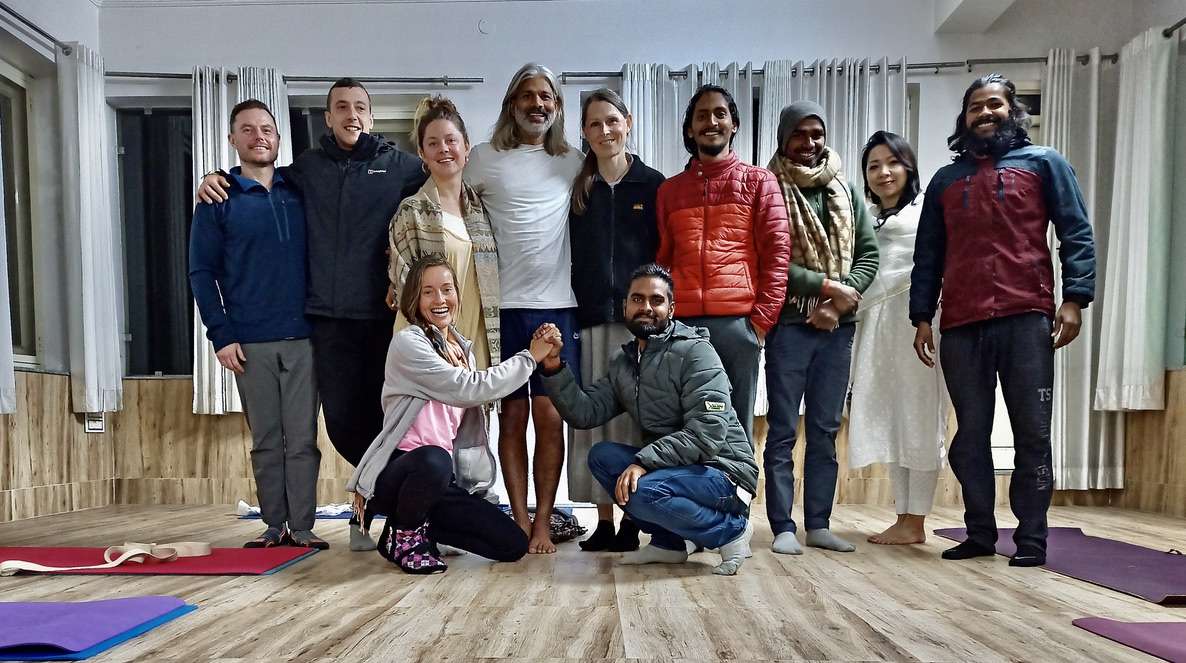 2. Teaching Methodology – This is a combination of complex topics such as Designing a Kriya Yoga class, How to teach different practices of Kriya Yoga, How to be good Kriya Yoga teacher, Ethical guidelines, Develop communication skills, Time management, Principles of demonstration, Assistance, Awareness, Correction, Styles of teaching, Specific needs of individuals in a Yoga class and Business aspects of Yoga teaching etc.
2. Teaching Methodology – This is a combination of complex topics such as Designing a Kriya Yoga class, How to teach different practices of Kriya Yoga, How to be good Kriya Yoga teacher, Ethical guidelines, Develop communication skills, Time management, Principles of demonstration, Assistance, Awareness, Correction, Styles of teaching, Specific needs of individuals in a Yoga class and Business aspects of Yoga teaching etc.
3. Anatomy and Physiology –
(a) Modern human anatomy and physiology – Overview and additional details of (Skeletal, Muscular, Digestive, Respiratory, Cardiovascular, Endocrine and Nervous system with regards to Kriya Yoga and its practices), Urinary system and Reproductive system (female and male), Immune System, Important Joints and their movements in different Asana and Important muscles and their movements in different Asana.
(b) Yoga human anatomy and physiology – Discussion on Human body according to Kriya Yoga and its relation to the study of human body in modern study regarding 3 Bodies, 5 elements, 5 Kosha, Prana, Mind, 5 Sense organs and 5 Motor organs, Nadi, Chakra and Kundalini.
(c) Holistic approach of Yoga – Learning how the system of Kriya Yoga needs to be incorporated for human well-being of body, mind, emotion and spirit.
4. Yoga Philosophy, Lifestyle and Ethics for Yoga Teachers – Overview of the fundamental topics from 200 Hours Hatha Yoga Teacher Training Course, Sristi (Creation) and Pralaya (Dissolution), Concept of Dharma, Dharma and Karma relation, Religion and its true essence with reference to comparative study of different faiths of the world, Hinduism – a way of living with reference to other ism’s as ways of living, Reflection on the life of great Gurus of different parts of the world with special reference to Swami Vivekananda, Bhakti Yoga as the Yoga of Kaliyuga, Kriya Yoga, History of Kriya Yoga, Development of Kriya Yoga, Important schools of Kriya Yoga, Great teachers of Kriya Yoga, Concept and methodology of Kriya Yoga, Aspects of Kriya Yoga for spiritual evolution, Yogic lifestyle, Ethics for a Yoga Teacher, Ethical guidelines as an individual and as a Yoga teacher.
5. Practicum – Practice of teaching different practices in groups as the lead instructor, Observe and assist while others teaching, Focus on specific practices and Compiling feedback etc.
Karma Yoga – During the course individuals undergo experiences which require those to be assimilated within for which Karma Yoga is the best means. Depending upon the requirements we many incorporate this as well.
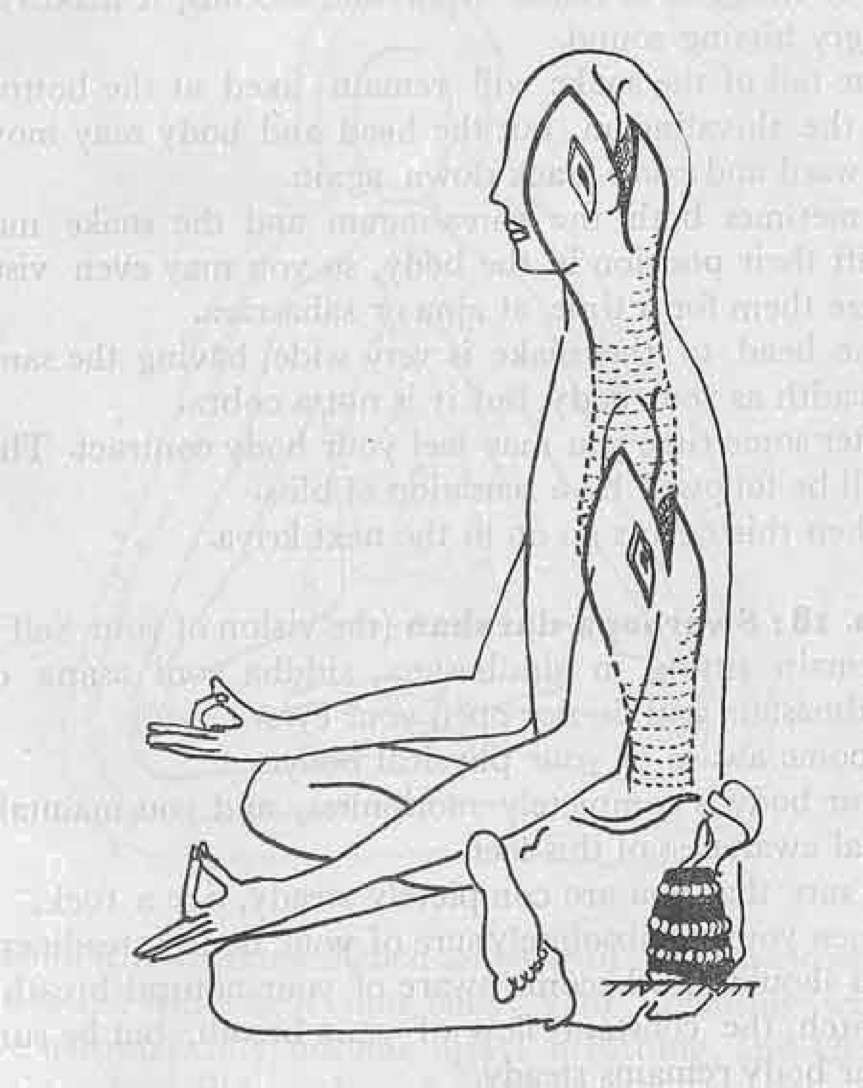 Suggested Yoga Books for 300 Hours Traditional Kriya Yoga Teacher Training Course –
Suggested Yoga Books for 300 Hours Traditional Kriya Yoga Teacher Training Course –
Yoga and Kriya – Swami Satyananda Saraswati
Kundalini Tantra – Swami Satyananda Saraswati
Kundalini Yoga – Swami Sivananda Saraswati
Asana Pranayama Mudra Bandha – Swami Satyananda Saraswati
Prana and Pranayama – Swami Niranjanananda Saraswati
The Science of Pranayama – Swami Sivananda Saraswati
Raja Yoga – Swami Vivekananda
Anatomy and Physiology – Not specified
 300 Hours Traditional Kundalini Yoga Teacher Training Course in Rishikesh India incorporates a unique blend of practices from various branches of Yoga. They come under the following heads –
300 Hours Traditional Kundalini Yoga Teacher Training Course in Rishikesh India incorporates a unique blend of practices from various branches of Yoga. They come under the following heads –
1. Techniques, Training and Practice – Several practices with designed orientation, breathing, awareness, visualization and devotion come in this category. They are –
Asana – Very specific and selective postures of Hatha Yoga such as Standing, Supine, prone – (backward, forward, spine twist), Inversion, Balance, Specific Padmasana Asana and Vajrasana Asana (Lotus and Thunderbolt series postures) in a prescribed sequence for Kundalini Yoga purposes.
Pranayama – Higher techniques of breathings with awareness, visualization, retention, use of Mudra and Bandha (Yogic Svashan, Kapalabhati, Bhastika, Nadi Shodhana, Sheetali, Sheetkari, Bhramari, Ujjayi, Surya Bheda and Moorcha). In addition, altogether 12 classical Pranayama with aim to stimulate special Nadi, Prana, Chakra and Kundalini.
Mudra – Specific, selected and important gesture to affect energy in body. In addition, 10 specific and very important mudra from ancient scriptures expressed by enlightened Yogis for Kundalini awakening.
Bandha – Important locks to block the flow of energy in body (Jalandhara Bandha, Uddiyana Bandha, Moola Bandha and Maha Bandha).
Satkarma – Purificatory practices in Yoga (Laghu Sankhaprakshalana, Vaman, Jala Neti and Sutra Neti).
Meditation – Fundamental and intermediate practices of Yoga Nidra with Chakra awareness, Yogic breathing with awareness, Fundamental practices of developing awareness, Kaya asthairyam (stillness of body) and its intermediate level, Awareness of natural breath and its intermediate level, Awareness of peace, Antarmouna (inner silence) with awareness of natural sensory responses, awareness of natural thought process, conscious creation and disposal of thought and awareness and disposal of spontaneous thoughts, Japa (chanting) of sacred mantra or holy syllables with rosary, Ajapa Japa (spontaneous chanting) with awareness of frontal psychic passage and awareness of frontal psychic passage with SOHAM, Developing awareness with mantra such as AUM, Fundamental Dharana (concentration) practices and concentration with sacred mantra, Trataka (gazing), Dharana (concentration) on pancha tattva (five elements), Nadi (channel), Prana, Chakra (seven chakra) and Kundalini, Void meditation and Group meditation for universal peace and harmony.
Mantra – Special mantra chanting, their meaning and further explanation to use them as a form of meditation for greater understanding and experience.
Devotional practices – Specific rituals, prayers, special mantra, moral guidelines, disciplines and additional practices for unified experience.
2. Teaching Methodology – This is a combination of complex topics such as Designing Kundalini Yoga class, How to teach different Kundalini practices, How to be good Yoga teacher, Ethical guidelines, Develop communication skills, Time management, Principles of demonstration, Assistance, Awareness, Correction, Styles of teaching, Specific needs of individuals in a Yoga class and Business aspects of Yoga teaching etc.
3. Anatomy and Physiology –
(a) Modern human anatomy and physiology – Overview and additional details of (Skeleton, Muscular, Digestive, Respiratory, Cardiovascular, Endocrine and Nervous system with regards to Kundalini Yoga and its practices), Urinary system and Reproductive system (female and male), Immune System, Important Joints and their movements in different Asana and Important muscles and their movements in different Asana.
(b) Yoga human anatomy and physiology – Discussion on Human body according to Kundalini Yoga and its relation to the study of human body in modern study regarding 3 Bodies, 5 elements, 5 Kosha, Prana, Mind, 5 Sense organs and 5 Motor organs, Nadi, Chakra and Kundalini.
(c) Holistic approach of Yoga – Learning how the system of Kundalini Yoga needs to be incorporated for human well-being of body, mind, emotion and spirit.
4. Yoga Philosophy, Lifestyle and Ethics for Yoga Teachers – Overview of the fundamental topics from 200 Hours Hatha Yoga Teacher Training Course, Sristi (Creation) and Pralaya (Dissolution), Concept of Dharma, Dharma and Karma relation, Religion and its true essence with reference to comparative study of different faiths of the world, Hinduism – a way of living with reference to other ism’s as ways of living, Reflection on the life of great Gurus of different parts of the world with special reference to Swami Vivekananda, Bhakti Yoga as the Yoga of Kaliyuga, Kundalini Yoga, History of Kundalini Yoga, Development of Kundalini Yoga, Important schools of Kundalini Yoga, Great teachers of Kundalini Yoga, Human body according to Kundalini Yoga (3 bodies, 5 elements, 5 Koshas, 5 Pranas, 5 Sense organs and 5 Motor organs, Mind, Nadi, Chakra and Kundalini according to ancient scriptures), Concept and methodology of Kundalini Yoga, Aspects of Kundalini Yoga for spiritual evolution, Ancient scriptures on Kundalini Yoga which is Shiva Samhita (Pratham Patal, Dvitiya Patal, Tritiya Patal, Chaturtha Patal and Pancham Patal), Yogic lifestyle, Ethics for a Yoga Teacher, Ethical guidelines as an individual and as a Yoga teacher.
5. Practicum – Practice of teaching different practices in groups as the lead instructor, Observe and assist while others teaching, Focus on specific practices and Compiling feedback etc.
Karma Yoga – During the course individuals undergo psychic experiences which require to be assimilated within. For this Karma Yoga is the best means. Depending upon the requirements we many incorporate this as well.
Suggested Yoga Books for 300 Hours Traditional Kundalini Yoga Teacher Training Course –
Kundalini Tantra – Swami Satyananda Saraswati
Kundalini Yoga – Swami Sivananda Saraswati
Shiva Samhita – Any translation
Asana Pranayama Mudra Bandha – Swami Satyananda Saraswati
Prana and Pranayama – Swami Niranjanananda Saraswati
The Science of Pranayama – Swami Sivananda Saraswati
Raja Yoga – Swami Vivekananda
Anatomy and Physiology – Not specified
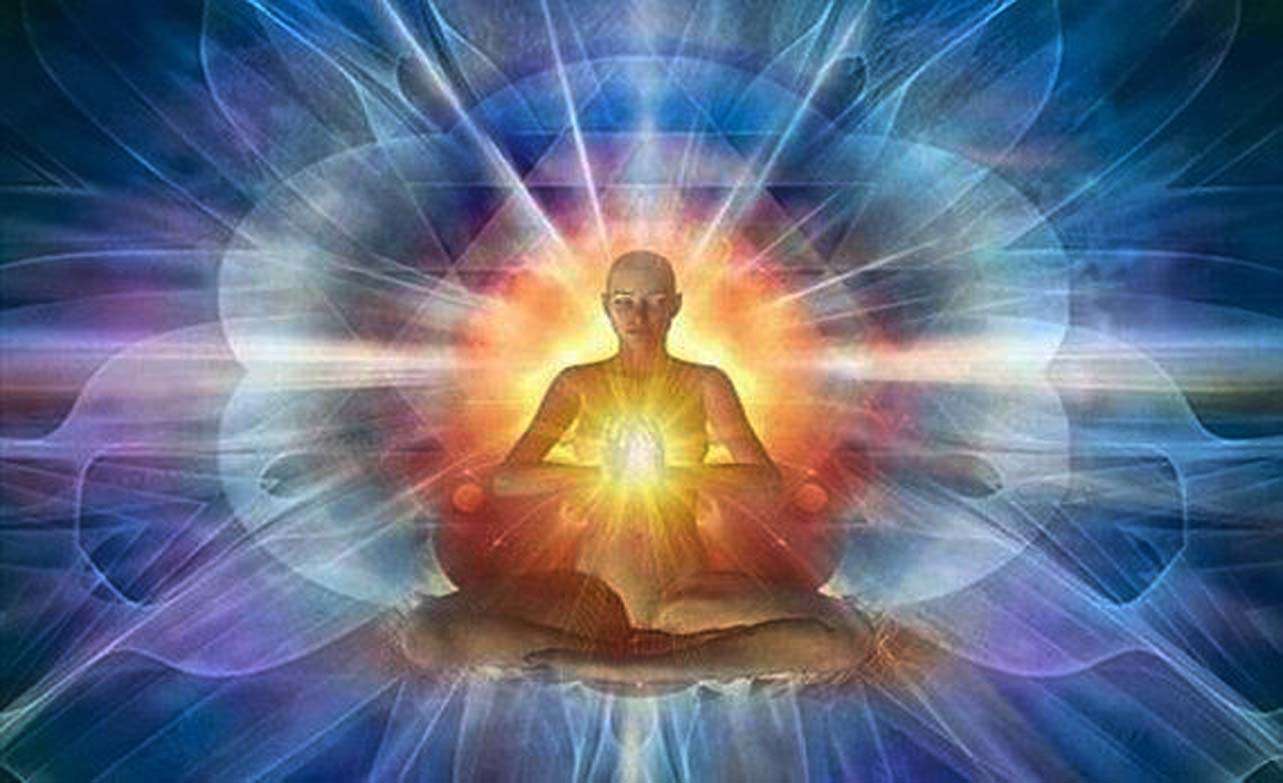 300 Hours Traditional Raja Yoga Teacher Training Course in Rishikesh India (Traditional Meditation Teacher Training Course in Rishikesh India) incorporates a series of subtle topics for study and practice. All these topics come under these following heads –
300 Hours Traditional Raja Yoga Teacher Training Course in Rishikesh India (Traditional Meditation Teacher Training Course in Rishikesh India) incorporates a series of subtle topics for study and practice. All these topics come under these following heads –
1. Techniques, Training and Practice – It incorporates several practices of Raja Yoga including important practices of Hatha Yoga as well for greater efficiency into Raja Yoga which students will study in the Yoga Teacher Training Course. They are –
Asana – Specific postures from Hatha Yoga such as Standing, Supine, Prone – (backward, forward, spine twist), Inversion, Balance, specific Padmasana Asana and Vajrasana Asana (Lotus and Thunderbolt series postures) in a prescribed sequence for Raja Yoga purposes.
Pranayama – Higher techniques of breathings with awareness, visualization, retention, use of Mudra and Bandha (Yogic Svashan, Kapalabhati, Bhastika, Nadi Shodhana, Sheetali, Sheetkari, Bhramari, Ujjayi, Surya Bheda and Moorcha). In addition, altogether 12 classical Pranayama. Special focus on Nadi Shodhana Pranayama as a means of purification of Nadi and sense control as described by Swami Vivekananda.
Mudra – Specific, selected and important gesture to affect energy in body.
Bandha – Important locks to block the flow of energy in body (Jalandhara Bandha, Uddiyana Bandha, Moola Bandha and Maha Bandha).
Satkarma – Purificatory practices in Yoga (Laghu Sankhaprakshalana, Vaman, Jala Neti and Sutra Neti).
Meditation – Fundamental and intermediate practices of Yoga Nidra, Yogic breathing with awareness, Fundamental practices of developing awareness, Kaya asthairyam (stillness of body) and its intermediate level, Awareness of natural breath and its intermediate level, Awareness of peace, Antarmouna (inner silence) with awareness of natural sensory responses, awareness of natural thought process, conscious creation and disposal of thought and awareness and disposal of spontaneous thoughts, Japa (chanting) of sacred mantra or holy syllables with rosary, Ajapa Japa (spontaneous chanting) with awareness of frontal psychic passage and awareness of frontal psychic passage with SOHAM, Developing awareness with mantra such as AUM, Fundamental Dharana (concentration) practices and concentration with sacred mantra, Trataka (gazing), Various methods of Dharana (concentration) practices described in Yoga Sutra of Patanjali and Group meditation for universal peace and harmony.
Moral Practices – Practices of Yama, Niyama and other moral practices relevant to spiritual growth.
2. Teaching Methodology – This is a combination of complex topics such as Designing Raja Yoga class, How to teach different practices of Yoga, How to be good Yoga teacher, Ethical guidelines, Develop communication skills, Time management, Principles of demonstration, Assistance, Awareness, Correction, Styles of teaching, Specific needs of individuals in a Yoga class and Business aspects of Yoga teaching etc.
3. Anatomy and Physiology –
(a) Modern human anatomy and physiology – Overview and additional details of (Skeleton, Muscular, Digestive, Respiratory, Cardiovascular, Endocrine and Nervous system with regards to Raja Yoga and its practices), Urinary system and Reproductive system (female and male), Immune System, Important Joints and their movements in different Asana and Important muscles and their movements in different Asana.
(b) Yoga human anatomy and physiology – Discussion on Human body according to Raja Yoga and its relation to the study of human body in modern study regarding 3 Bodies, 5 elements, 5 Kosha, Prana, Mind, 5 Sense organs and 5 Motor organs, Nadi, Chakra and Kundalini.
(c) Holistic approach of Yoga – Learning how the system of Raja Yoga needs to be incorporated for human well-being of body, mind, emotion and spirit.
4. Yoga Philosophy, Lifestyle and Ethics for Yoga Teachers – Overview of the fundamental topics from 200 Hours Hatha Yoga Teacher Training Course, Sristi (Creation) and Pralaya (Dissolution), Concept of Dharma, Dharma and Karma relation, Religion and its true essence with reference to comparative study of different faiths of the world, Hinduism – a way of living with reference to other ism’s as ways of living, Reflection on the life of great Gurus of different parts of the world with special reference to Swami Vivekananda, Bhakti Yoga as the Yoga of Kaliyuga, Raja Yoga, History of Raja Yoga, Development of Raja Yoga, Important schools of Raja Yoga, Great teachers of Raja Yoga, Raja Yoga in the ancient scripture Kurma Purana, Concept and methodology of Raja Yoga, Yoga Sutra of sage Patanjali as an important scripture of Raja Yoga as described by Swami Vivekannada, Yoga Sutra of Sage Patanjali (important topics from all four chapters – Samadhi Pada, Sadhana Pada, Vibhuti Pada and Kaivalya Pada), Aspects of Raja Yoga for spiritual evolution, Yogic lifestyle, Ethics for a Yoga Teacher, Ethical guidelines as an individual and as a Yoga teacher.
5. Practicum – Practice of teaching different practices in groups as the lead instructor, Observe and assist while others teaching, Focus on specific practices and Compiling feedback etc.
Suggested Yoga Books for 300 Hours Traditional Raja Yoga Teacher Training Course –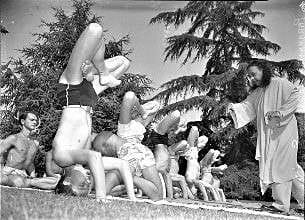
Asana Pranayama Mudra Bandha – Swami Satyananda Saraswati
Raja Yoga – Swami Vivekananda or
Four Chapters on freedom – Swami Satyananda Saraswati
Yoga Darshan – Swami Niranjanananda Saraswati
Anatomy and Physiology – Not specified
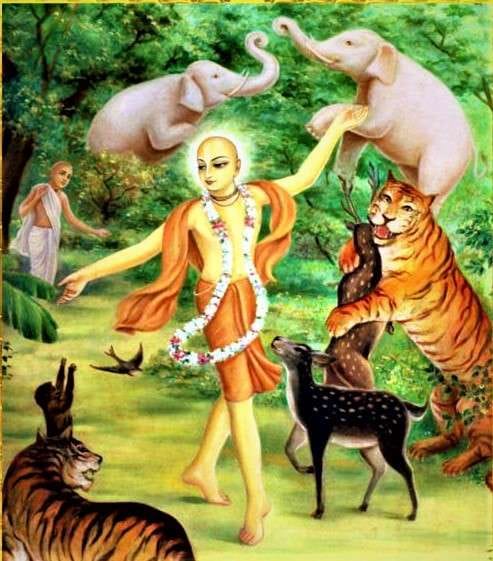 300 Hours Traditional Bhakti Yoga Teacher Training Course incorporates a series of subtle topics for study and practice. All these topics come under these following heads –
300 Hours Traditional Bhakti Yoga Teacher Training Course incorporates a series of subtle topics for study and practice. All these topics come under these following heads –
1. Techniques, Training and Practice – It incorporates several practices of Bhakti Yoga including important practices of Hatha Yoga as well for greater efficiency into Bhakti Yoga which students will study in the Bhakti Yoga Teacher Training Course. They are –
Asana – Postures of Hatha Yoga such as preparatory movements of joints, muscles and parts of body, Standing, Supine, Prone – (backward, forward, spine twist), Inversion, Balance, specific Padmasana Asana and Vajrasana Asana (Lotus and Thunderbolt series postures) in a prescribed sequence for Bhakti Yoga purposes.
Pranayama – Higher techniques of breathings with awareness, visualization, retention, use of Mudra and Bandha (Yogic Svashan, Kapalabhati, Bhastika, Nadi Shodhana, Sheetali, Sheetkari, Bhramari, Ujjayi, Surya Bheda and Moorcha). In addition, altogether 12 classical Pranayama. Special focus on Nadi Shodhana Pranayama for Mantra chanting and performing rituals.
Mudra – Specific, selected and important gesture to affect energy in body.
Bandha – Important locks to block the flow of energy in body (Jalandhara Bandha, Uddiyana Bandha, Moola Bandha and Maha Bandha).
Satkarma – Purificatory practices in Yoga (Laghu Sankhaprakshalana, Vaman, Jala Neti and Sutra Neti).
Meditation – Fundamental and intermediate practices of Yoga Nidra, Yogic breathing with awareness, Fundamental practices of developing awareness, Kaya asthairyam (stillness of body) and its intermediate level, Awareness of natural breath and its intermediate level, Awareness of peace, Developing awareness with mantra such as AUM, Fundamental Dharana (concentration) practices and concentration with sacred mantra, Trataka (gazing), Saguna Meditation (on the forms of God and enlightened saints), Various methods of Dharana (concentration) practices described in Bhakti Sutra of Sage Narada and Group meditation for universal peace and harmony.
 Rituals and Kirtan – Orthodox Panchopchar, Astopchar and Sodsopchar methods of ritual to worship any form of God, Unorthodox methods of rituals to worship God, Kirtan with sacred names of God and Orthodox & unorthodox prayers.
Rituals and Kirtan – Orthodox Panchopchar, Astopchar and Sodsopchar methods of ritual to worship any form of God, Unorthodox methods of rituals to worship God, Kirtan with sacred names of God and Orthodox & unorthodox prayers.
Moral Practices – Practices of Yama, Niyama and other moral practices relevant to spiritual growth.
2. Teaching Methodology – This is a combination of complex topics such as Designing Bhakti Yoga class, How to teach different practices of Yoga, How to be a good Yoga teacher, Ethical guidelines, Develop communication skills, Time management, Principles of demonstration, Assistance, Awareness, Correction, Styles of teaching, Specific needs of individuals in a Yoga class and Business aspects of Yoga teaching etc.
3. Anatomy and Physiology –
(a) Modern human anatomy and physiology – Overview and additional details of (Skeleton, Muscular, Digestive, Respiratory, Cardiovascular, Endocrine and Nervous system with regards to Bhakti Yoga and its practices), Urinary system and Reproductive system (female and male), Immune System, Important Joints and their movements in different Asana and Important muscles and their movements in different Asana.
(b) Yoga human anatomy and physiology – Discussion on Human body according to Bhakti Yoga and its relation to the study of human body in modern study regarding 3 Bodies, 5 elements, 5 Kosha, Prana, Mind, 5 Sense organs and 5 Motor organs, Nadi, Chakra and Kundalini.
(c) Holistic approach of Yoga – Learning how the system of Bhakti Yoga needs to be incorporated for human well-being of body, mind, emotion and spirit.
4. Yoga Philosophy, Lifestyle and Ethics for Yoga Teachers – Overview of the fundamental topics from 200 Hours Hatha Yoga Teacher Training Course, Sristi (Creation) and Pralaya (Dissolution), Concept of Dharma, Dharma and Karma relation, Religion and its true essence with reference to comparative study of different faiths of the world, Hinduism – a way of living with reference to other ism’s as ways of living, Reflection on the life of great Gurus of different parts of the world with special reference to Swami Vivekananda, Bhakti Yoga as the Yoga of Kaliyuga, History of Bhakti Yoga, Development of Bhakti Yoga, Important schools of Bhakti Yoga, Great teachers of Bhakti Yoga, Bhakti Yoga in the ancient scriptures of world, Concept and methodology of Bhakti Yoga, Bhakti Sutra of Sage Narada as an important scripture of Bhakti Yoga as described by Swami Sivananda, Aspects of Bhakti Yoga for spiritual evolution, Yogic lifestyle, Ethics for a Yoga Teacher, Ethical guidelines as an individual and as a Yoga teacher. 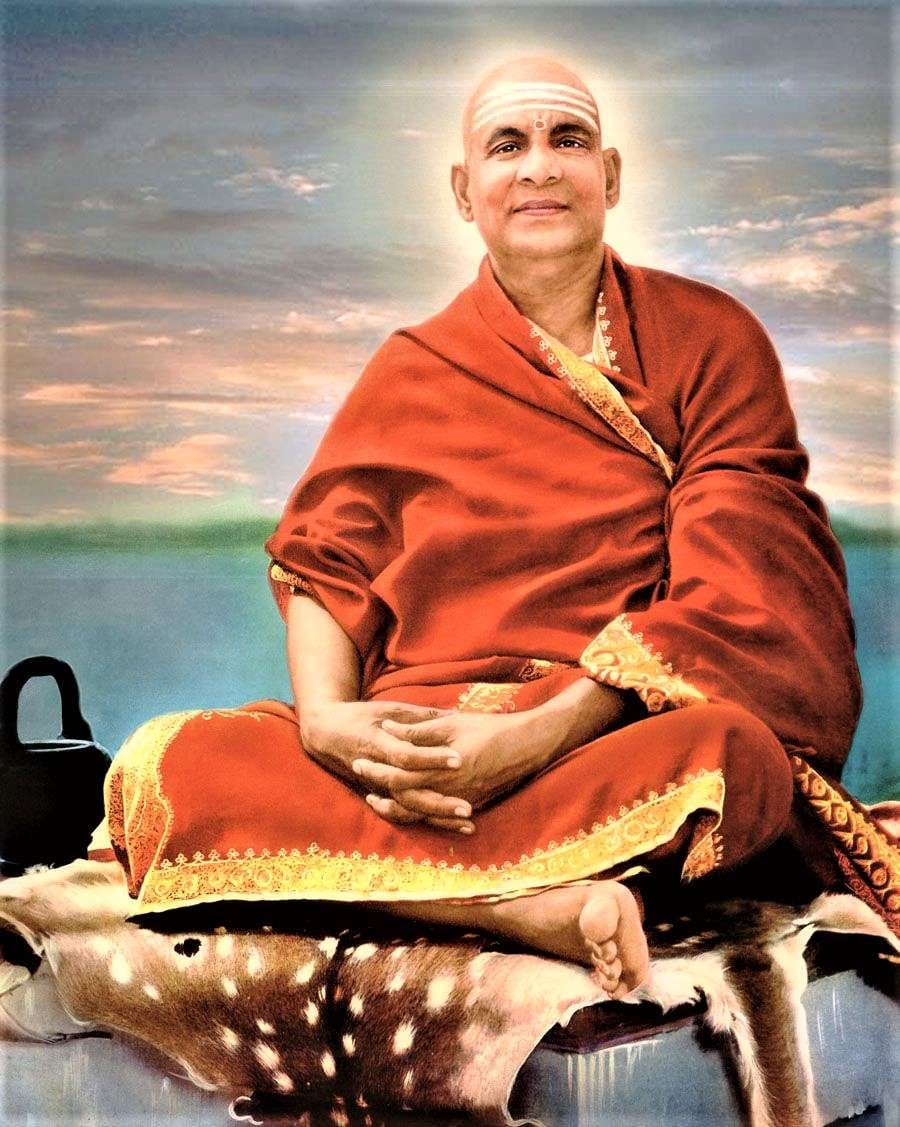
5. Practicum – Practice of teaching different practices in groups as the lead instructor, Observe and assist while others teaching, Focus on specific practices and Compiling feedback etc.
Suggested Yoga Books for 300 Hours Traditional Bhakti Yoga Teacher Training Course –
Asana Pranayama Mudra Bandha – Swami Satyananda Saraswati
Narada Bhakti Sutra Yoga – Swami Sivananda
Yoga Darshan – Swami Niranjanananda Saraswati
Anatomy and Physiology – Not specified
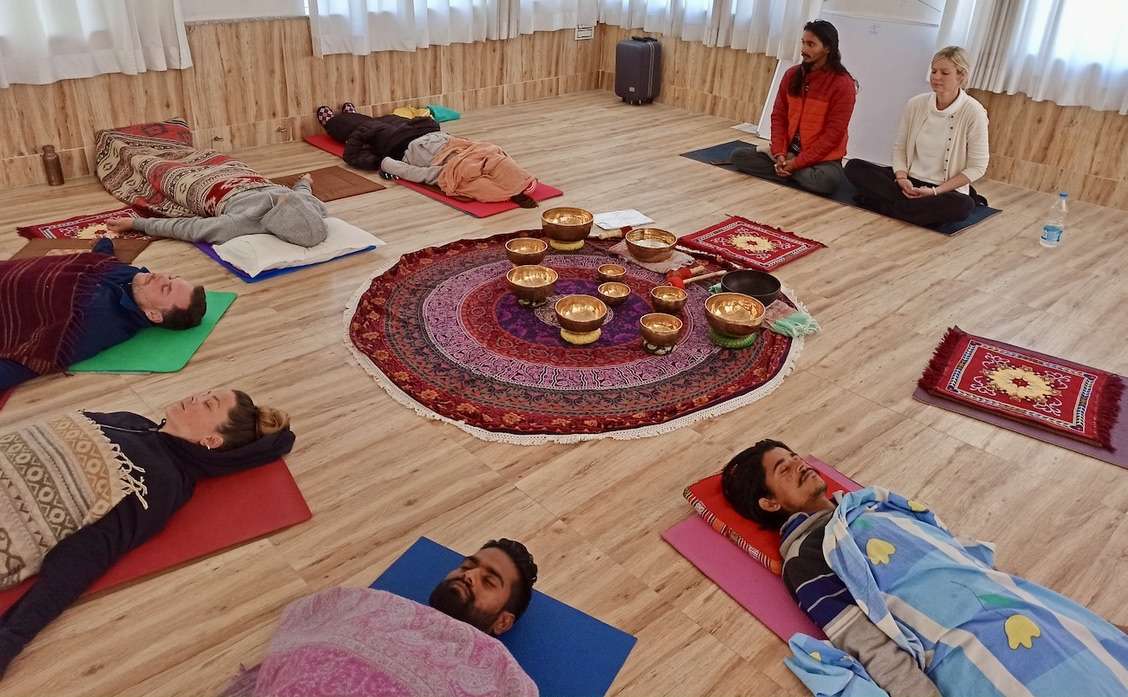 Yoga Retreat in Rishikesh India incorporates several topics which helps one to enter into Yogic culture. They are –
Yoga Retreat in Rishikesh India incorporates several topics which helps one to enter into Yogic culture. They are –
Hatha Yoga Asana – Different basic postures of Hatha Yoga such as such as preparatory movements of joints, muscles and parts of body, Standing, Supine, Prone – (backward, forward, spine twist), Inversion and Balance.
Pranayama – Udar Svashan, Vaksha Svashan, Griva Svashan, Yogic Svashan, Kapalabhati, Nadi Shodhana, Bhramari and Ujjayi.
Mudra – Basic gesture of hands, fingers and body to affect energy in body.
Satkarma – Practices for purification of body in Yoga (Jala Neti).
Meditation – Fundamental practices of Yoga Nidra, Yogic breathing with awareness, Fundamental practices of developing awareness, Kaya asthairyam (stillness of body), Awareness of natural breath, Awareness of peace and Developing awareness with mantra such as AUM.
Some other important topics – How to do different practices of Yoga, How to make a Yoga program, Ethical guidelines, Human anatomy, Teaching methodology, Yogic life style and Holistic approach of Yoga.
Karma Yoga – During the retreat individuals would be required those to participate into Karma Yoga. Depending upon the requirements we may involve you into this.
 Suggested Yoga Books for Yoga Retreat –
Suggested Yoga Books for Yoga Retreat –
Asana Pranayama Mudra Bandha – Swami Satyananda Saraswati
Raja Yoga – Swami Vivekananda or
Four Chapters on freedom – Swami Satyananda Saraswati
Anatomy and Physiology – Not specified
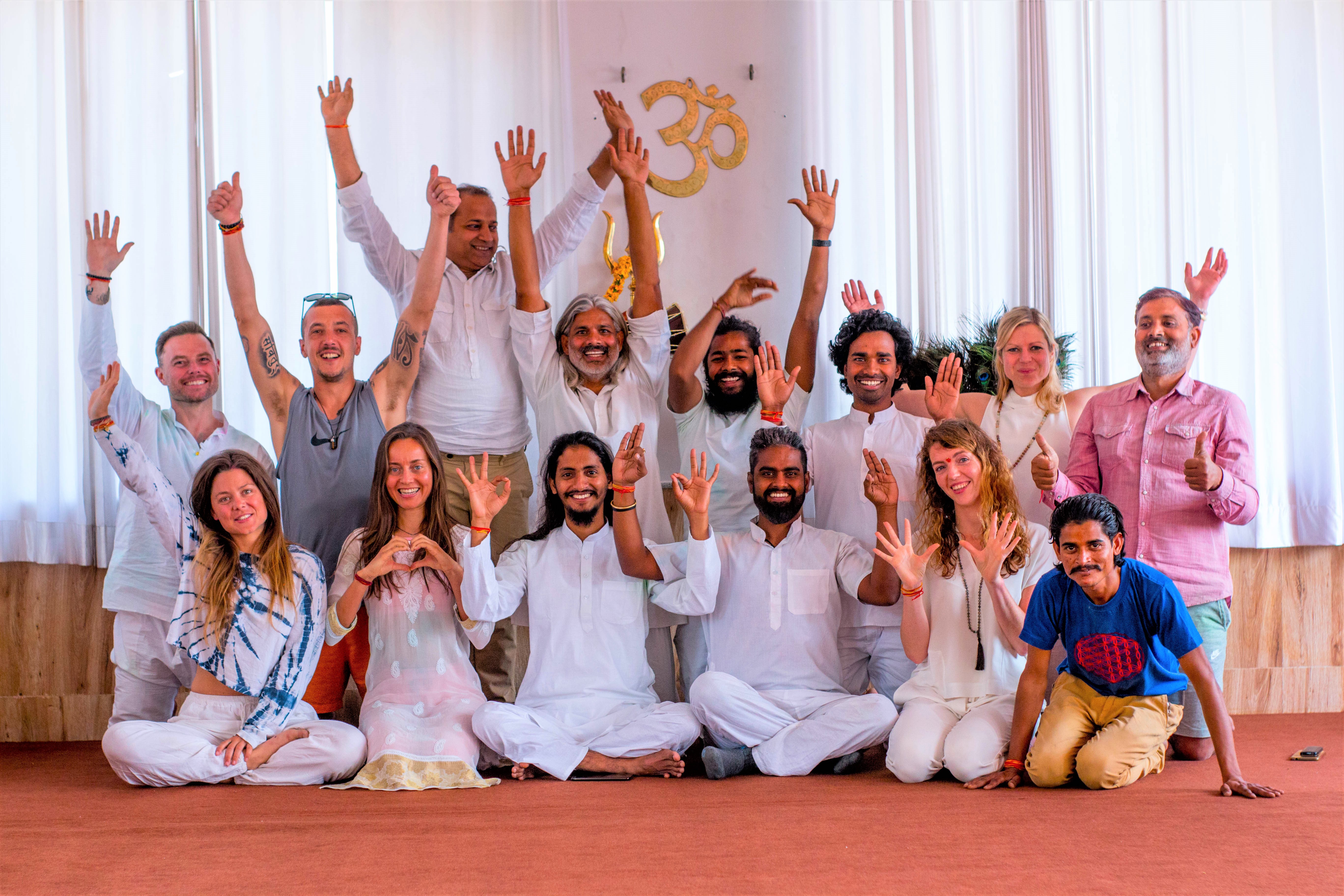 Meditation Retreat in Rishikesh India incorporates several topics which helps one to enter into Yogic culture of meditation. They are –
Meditation Retreat in Rishikesh India incorporates several topics which helps one to enter into Yogic culture of meditation. They are –
Hatha Yoga Asana – Different basic postures of Hatha Yoga such as such as preparatory movements of joints, muscles and parts of body, Standing, Supine, Prone – (backward, forward and spine twist), Inversion and Balance, specific Asana helpful for relaxation and meditation such as Shavasana, Sukhasana, Ardha Padmasana, Padmasana, Siddhasana, Siddha Yoni Asana, Swastikasana, Dhyana Veerasana, Vajrasana and Padadhirasana etc.
Pranayama – Udar Svashan, Vaksha Svashan, Griva Svashan, Yogic Svashan, Nadi Shodhana, Bhramari and Ujjayi with special method which helps towards meditation.
Mudra – Some basic gesture of fingers and body to affect energy in body such as – Jnana, China, Bhirava & Bhairavi etc.
Satkarma – Practices for purification of body in Yoga (Jala Neti).
Meditation – Fundamental practices of Yoga Nidra, Yogic breathing with awareness, Fundamental practices of developing awareness, Kaya asthairyam (stillness of body), Awareness of natural breath, Awareness of peace, Bhao aaropan (Awareness of feelings), Developing awareness with mantra such as AUM, Sharir darshan (Body awareness), Awareness of certain symbols, Chakra Awareness and Atmanubhav (Self-awareness).
Lecture on Some important topics – How to do different practices of Yoga, How to make program, Ethical guidelines, Yogic life style and Holistic approach of Yoga.
Karma Yoga – During the retreat individuals would be required those to participate into Karma Yoga. Depending upon the requirements we may involve you into this.

Suggested Yoga Books for Meditation Retreat –
Asana Pranayama Mudra Bandha – Swami Satyananda Saraswati
Raja Yoga – Swami Vivekananda or
Four Chapters on Freedom – Swami Satyananda Saraswati
Yoga Darshan – Swami Niranjanananda Saraswati
Anatomy and Physiology – Not specified
 100 Hours Women Yoga Training Retreat in Rishikesh India incorporates several topics of theory and practical which helps one to understand and know the Yogic culture for women. They are –
100 Hours Women Yoga Training Retreat in Rishikesh India incorporates several topics of theory and practical which helps one to understand and know the Yogic culture for women. They are –
1. Techniques, Training and Practice –
Hatha Yoga Asana – Different basic postures of Hatha Yoga specifically designed and very important for women such as preparatory movements of joints, muscles and parts of body, Standing, Supine, Prone – (backward, forward, spine twist), Inversion and Balance.
Pranayama – With special guidelines for women such as Udar Svashan, Vaksha Svashan, Griva Svashan, Yogic Svashan, Kapalabhati, Nadi Shodhana, Bhramari and Ujjayi.
Mudra – Basic gesture of hands, fingers and body especially for women to affect energy in body.
Bandha – Practices for locking the energy in body.
Satkarma – Practices for purification of body in Yoga (Jala Neti).
Meditation – Fundamental practices of Yoga Nidra, Yogic breathing with awareness, Fundamental practices of developing awareness, Kaya asthairyam (stillness of body), Awareness of natural breath, Awareness of peace, Bhao aaropan (Awareness of feelings), Developing awareness with mantra such as AUM, Sharira darshan (Body awareness), Awareness of certain symbols, Chakra Awareness and Atmanubhav (Self-awareness).
Karma Yoga – During the retreat individuals would be required those to participate in Karma Yoga. Depending upon the requirements we may involve you into this.
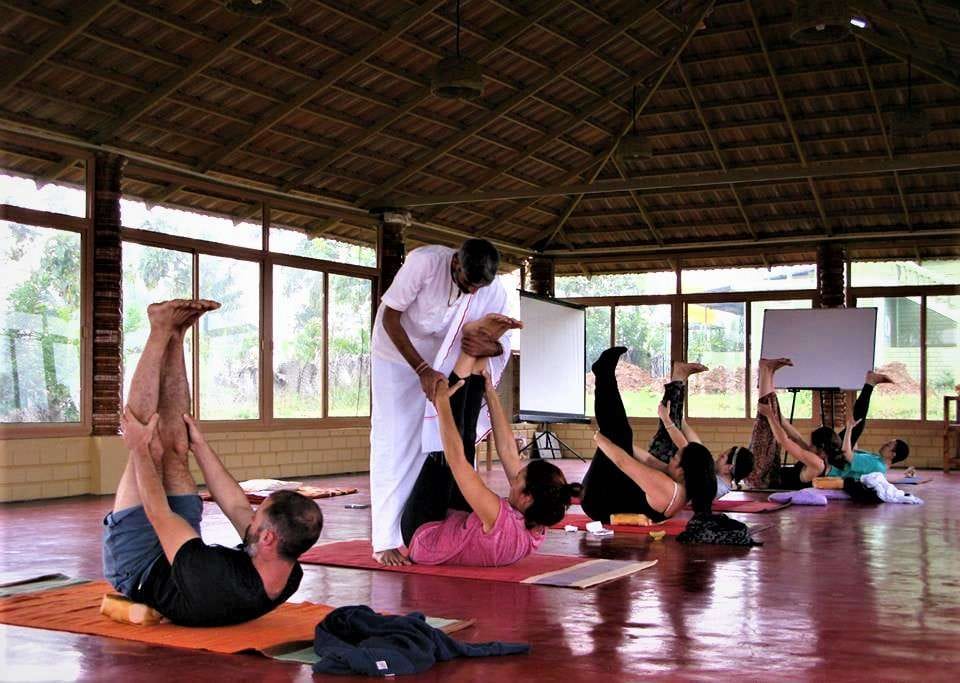 2. Teaching Methodology – This is a combination of complex topics such as Designing Yoga class for women, How to teach different practices of Yoga, How to be good Yoga teacher, Ethical guidelines, Develop communication skills, Time management, Principles of demonstration, Assistance, Awareness, Correction, Styles of teaching, Specific needs of children in a Yoga class and Business aspects of Yoga for women etc.
2. Teaching Methodology – This is a combination of complex topics such as Designing Yoga class for women, How to teach different practices of Yoga, How to be good Yoga teacher, Ethical guidelines, Develop communication skills, Time management, Principles of demonstration, Assistance, Awareness, Correction, Styles of teaching, Specific needs of children in a Yoga class and Business aspects of Yoga for women etc.
3. Anatomy and Physiology –
(a) Modern human anatomy and physiology – Skeleton System, Muscular System, Respiratory System, Endocrine System, Reproductive System and Nervous System.
(b) Yoga human anatomy and physiology – Human body according to Yoga and their relation to the study of human body in modern study (Discussion on 3 Bodies, 5 elements, 5 Kosha, Nadi, Chakra and Kundalini).
(c) Holistic approach of Yoga – Learning how system of Yoga needs to be incorporated to women to affect the internal organs for substantial growth and development.
4. Yoga Philosophy, Lifestyle and Ethics for Yoga Teachers – Overview of description of the term Philosophy, Yoga, Way of living, True sense of the term “religion”, Little reflection on the life story of great Gurus of different parts of the world, Womanhood, Women’s health and hygiene, Motherhood, How to look after children according to Yogic Lifestyle, Ethics for a Yoga Teacher for women, Stories of some great women of the world, Ethical guidelines as an individual and as a Yoga teacher.
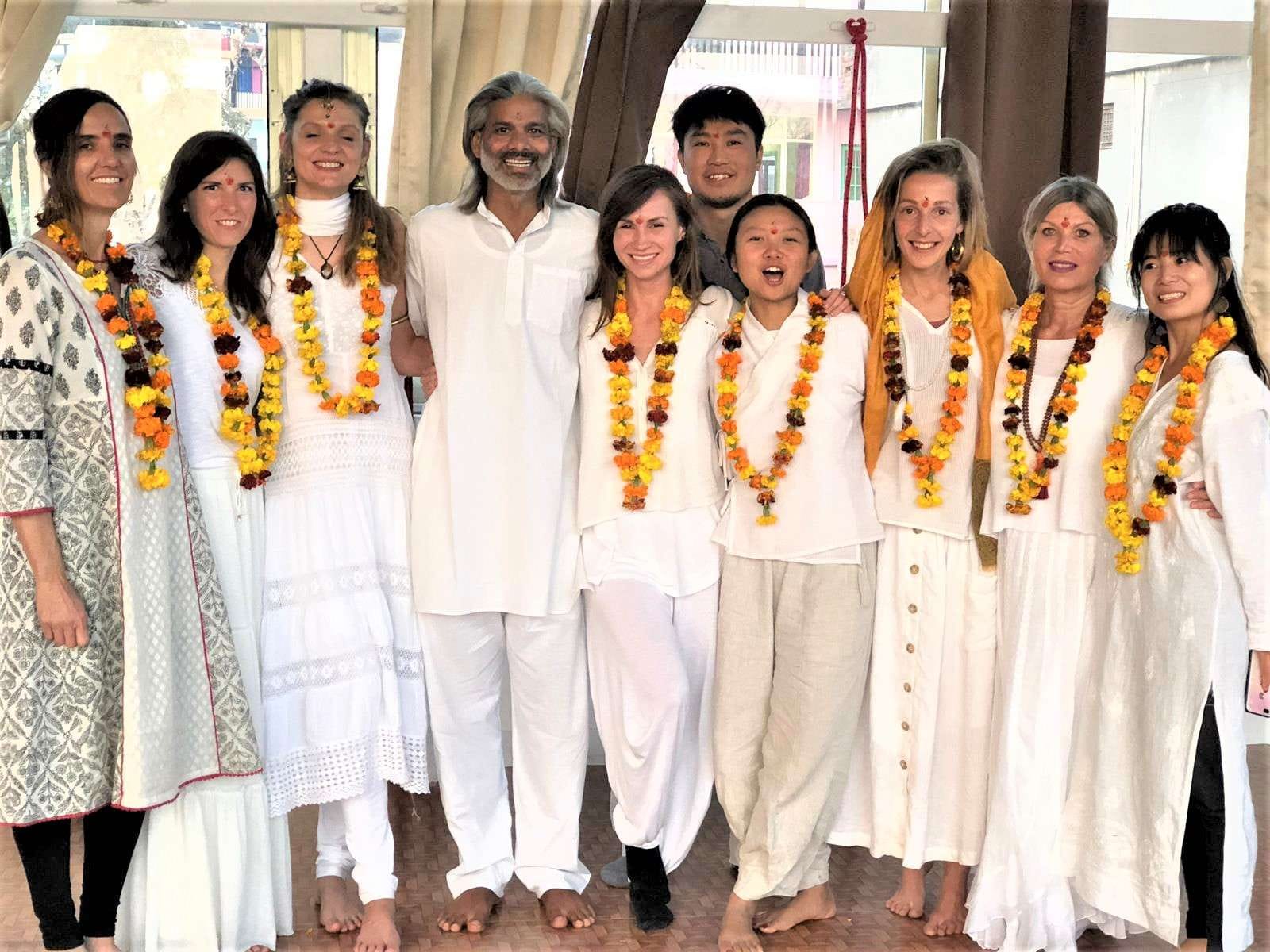 5. Practicum – Practice of teaching in groups as the lead instructor, Observe and assist while others teaching, Focus on specific practices and Compiling feedback etc.
5. Practicum – Practice of teaching in groups as the lead instructor, Observe and assist while others teaching, Focus on specific practices and Compiling feedback etc.
Suggested Yoga Books for 100 Hours Women Yoga Training Retreat –
Nawa Yogini Tantra – Swami Satyananda Saraswati
Yoga and Pregnancy – Swami Nirmalananda Saraswati
Asana Pranayama Mudra Bandha – Swami Satyananda Saraswati
Anatomy and Physiology – Not specified
 100 Hours Children Yoga Training Retreat in Rishikesh India incorporates several topics which helps one to understand and know the Yogic culture for children. They are –
100 Hours Children Yoga Training Retreat in Rishikesh India incorporates several topics which helps one to understand and know the Yogic culture for children. They are –
1. Techniques, Training, Practice –
Hatha Yoga Asana – Different postures of Hatha Yoga such as such as preparatory movements of joints, muscles and parts of body properly designed and very important for children such as Standing, Supine, Prone – (backward, forward, spine twist), Inversion only for children of certain age group and Balance.
Pranayama – Udar Svashan, Vaksha Svashan, Griva Svashan, Yogic Svashan, Nadi Shodhana, Bhramari and Ujjayi according to the proper norms designed for children.
Mudra – Basic gesture of hands, fingers and body for children to affect energy in body.
Satkarma – Practices for purification of body in Yoga (Jala Neti and others only if required for children of certain age group).
Meditation – All forms of practices in a proper scheme suited for children such as Fundamental practices of Yoga Nidra for children, Yogic breathing with awareness, Fundamental practices of developing awareness, Kaya asthairyam (stillness of body), Awareness of natural breath, Special practices of meditation for children and Developing awareness with mantra such as AUM.
Karma Yoga – During the retreat individuals would be required those to participate in Karma Yoga. Depending upon the requirements we may involve you into this.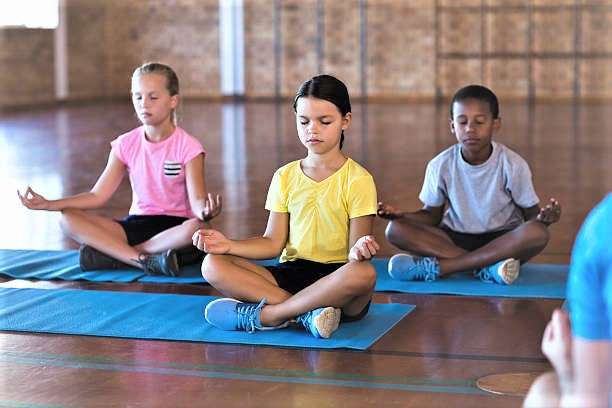
2. Teaching Methodology – This is a combination of complex topics such as Designing Yoga class for children, How to teach different practices of Yoga, How to be good Yoga teacher, Ethical guidelines, Develop communication skills, Time management, Principles of demonstration, Assistance, Awareness, Correction, Styles of teaching, Specific needs of children in a Yoga class and Business aspects of Yoga for children etc.
3. Anatomy and Physiology –
(a) Modern human anatomy and physiology – Skeleton System, Muscular System, Respiratory System, Endocrine System and Nervous System.
(b) Yoga human anatomy and physiology – Short discussion on composition of Human body according to Yoga and their relation to the study of human body in modern study, Discussion on 3 Bodies, 5 Elements, 5 Kosha, 5 Sense organs and 5 Motor organs, Nadi, Chakra and Kundalini.
(c) Holistic approach of Yoga – Learning how system of Yoga needs to be incorporated to children to affect the internal organs for substantial growth and development of children.
4. Yoga Philosophy, Lifestyle and Ethics for Yoga Teachers – Overview of description of the term Philosophy, Yoga, Way of living, Little reflection on the life story of great Gurus of different parts of the world, Parenthood, Talks regarding how to look after children according to Yogic Lifestyle, Child psychology, Ethics for a Children Yoga Teacher and Ethical guidelines as an individual and as a Yoga teacher.
5. Practicum – Practice of teaching different practices in groups as the lead instructor, Observe and assist while others teaching, Focus on specific practices and Compiling feedback etc.
Suggested Yoga Books for 100 Hours Children Yoga Training Retreat –
Yoga Education for Children (Volume 1) – Swami Satyananda Saraswati
Yoga Education for Children (Volume 2) – Swami Niranjananda Saraswati
Asana Pranayama Mudra Bandha – Swami Satyananda Saraswati
Anatomy and Physiology – Not specified
 The scheme of study – The retreat combines theoretical as well as practical aspects of Yoga as to how they are helpful to improve our physical, mental, emotional and spiritual health. The curriculum combines important topics of Yoga, guidelines based on lifestyle and information on application of Yoga on health issues.
The scheme of study – The retreat combines theoretical as well as practical aspects of Yoga as to how they are helpful to improve our physical, mental, emotional and spiritual health. The curriculum combines important topics of Yoga, guidelines based on lifestyle and information on application of Yoga on health issues.
Important theoretical study – Philosophy of Yoga and its meaning, Aims of Yoga, Sristi (Uinverse) according to Yoga, Human body (3 Bodies, 5 elements, 5 Kosha, Prana, Mind, 5 Sense organs and 5 Motor organs, Nadi, Chakra and Kundalini), Selected topics from Yoga Sutra to understand Yoga psychology (Antahakaran, Chitta, Antarayah, Ishwara, Aum, 5 Kleshas and 8 limbs), How to use Yoga practices on certain health conditions, Brief study regarding how to design the Yoga practices, How to practice, Ethical guidelines and Life style.
Important practices – The main practices come from Hatha Yoga which are blended with practices from Kriya Yoga, Kundalini Yoga and Raja Yoga. They are –
Asana – Postures of Hatha Yoga such as preparatory movements of joints, muscles and parts of body, Standing, Supine, Prone – (backward, forward, spine twist), Inversion and Balance including those asana which are remedial in nature at their intermediate level.
 Pranayama – Udar Svashan, Vaksha Svashan, Griva Svashan, Yogic Svashan, Kapalabhati, Bhastrika, Nadi Shodhana, Bhramari and Ujjayi.
Pranayama – Udar Svashan, Vaksha Svashan, Griva Svashan, Yogic Svashan, Kapalabhati, Bhastrika, Nadi Shodhana, Bhramari and Ujjayi.
Mudra – Gesture of hands, fingers and body to affect energy in body.
Bandha – Practices of locking the energy in body.
Satkarma – Practices for purification of body in Yoga (Jala Neti).
Meditation – Fundamental practices of Yoga Nidra, Yogic breathing with awareness, Fundamental practices of developing awareness, Kaya asthairyam (stillness of body), Awareness of natural breath, Awareness of peace, Antarmouna (inner silence) with awareness of natural sensory responses and awareness of natural thought process, Developing awareness with mantra such as AUM and other Relevant practices of meditation for healing.
Attention – Every retreat is with people from different situation so there is always a requirement for change in the program mentioned here.
Relevant Yoga Books for Yoga Therapy Training Retreat –

Asana – Hatha Yoga Asana such as preparatory movements of joints, muscles and parts of body, Standing, Supine, Prone – (backward, forward, spine twist), Inversion and Balance at beginners and intermediate level.
Pranayama – Hatha Yoga Pranayama such as Udar Svashan, Vaksha Svashan, Griva Svashan, Yogic Svashan, Kapalabhati, Nadi Shodhana, Bhramari and Ujjayi etc. at beginners and intermediate level.
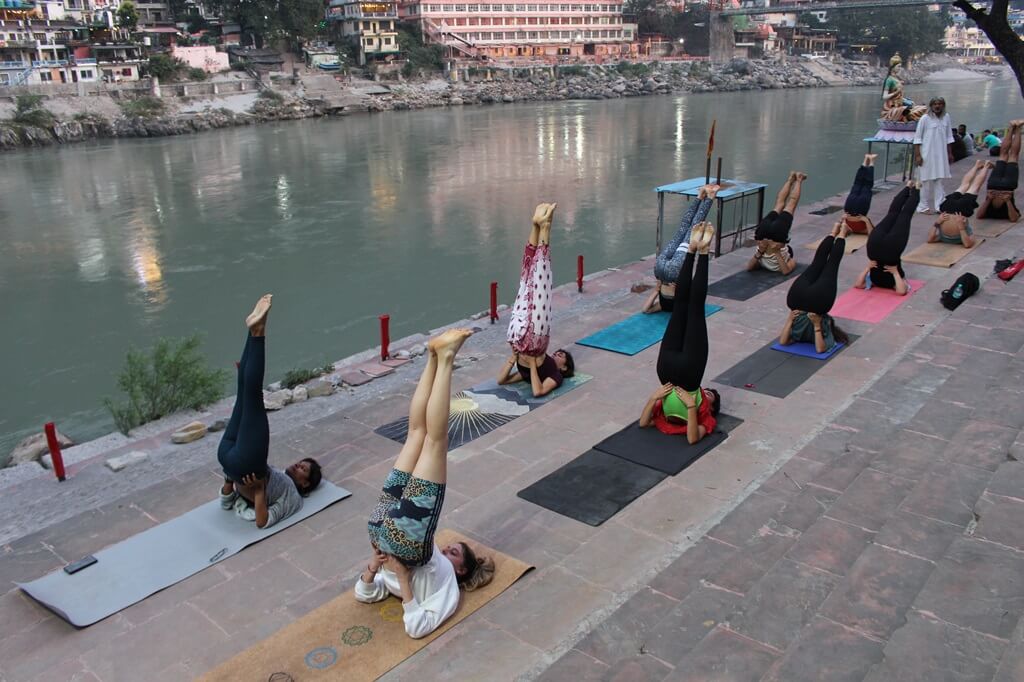 Asana – Hatha Yoga Asana such as preparatory movements of joints, muscles and parts of body, Standing, Supine, Prone – (backward, forward, spine twist), Inversion and Balance at beginners, intermediate and advance level.
Asana – Hatha Yoga Asana such as preparatory movements of joints, muscles and parts of body, Standing, Supine, Prone – (backward, forward, spine twist), Inversion and Balance at beginners, intermediate and advance level.
Asana – Hatha Yoga Asana such as preparatory movements of joints, muscles and parts of body, Standing, Supine, Prone – (backward, forward, spine twist), Inversion and Balance at beginners and intermediate level.
Pranayama – Hatha Yoga Pranayama such as Udar Svashan, Vaksha Svashan, Griva Svashan, Yaugik Svashan, Kapalabhati, Bhastrika, Surya Bheda, Ujjayi, Nadi Shodhana, Bhramari and etc. at intermediate and advance level.
Mudra – Hatha Yoga Mudra categorised into around five groups such as Hast Mudra (Hand gesture), Man Mudra (Head gesture), Kaya Mudra (Postural gesture), Bandh Mudra (Lock gesture) and Adhar Mudra (Perineal gesture) at beginners, intermediate and advance level.
Bandha – Hatha Yoga four Bandha such as Jalandhara Bandha (Throat lock), Uddiyana Bandha (Abdominal lock), Moola Bandha (Perineum lock) and Maha Bandha (Great lock) at beginners, intermediate and advance level.
Shatkarma – Hatha Yoga Shatkarma practices such as Neti, Dhauti, Nauli, Basti, Kapalabhati and Trataka at beginners, intermediate and advance level.
Meditation – Raja Yoga meditation practices for various kinds at beginners, intermediate and advance level.
Tantra – Important practices from Tantra in order to attain inner vitality, inner peace, relationship needs, and Tantra for couples etc. at beginners, intermediate and advance level.
 Kundalini – Important practices from Tantra to work on Kundalini Shakti at beginners, intermediate and advance level.
Kundalini – Important practices from Tantra to work on Kundalini Shakti at beginners, intermediate and advance level.
Chakra – Important practices from Tantra to work on seven important Chakra at beginners, intermediate and advance level.
Three Nadi – Important practices from Tantra to work on three Nadi at beginners, intermediate and advance level.
Tantra for couples – Important practices from Tantra for couples at beginners, intermediate and advance level.
Swara Yoga – Important practices from Swara Yoga at beginners, intermediate and advance level.
Prana Vidya (Ancient energy healing) – Prana Vidya as ancient science of healing and its practices from Tantra at beginners, intermediate and advance level.
Yoga Nidra (commonly called Nidra Yoga) – Yoga Nidra from Tantra as an ancient science of deeper relaxation, rejuvenation, healing and transformation at beginners, intermediate and advance level.
Yoga Cleansing – Yoga cleansing as an ancient science of deeper purification, relaxation, rejuvenation, healing and transformation at beginners, intermediate and advance level.
15 Hours Hatha Asana Training with Certification – Hatha Yoga Asana, its theory, practical and proper guidelines.
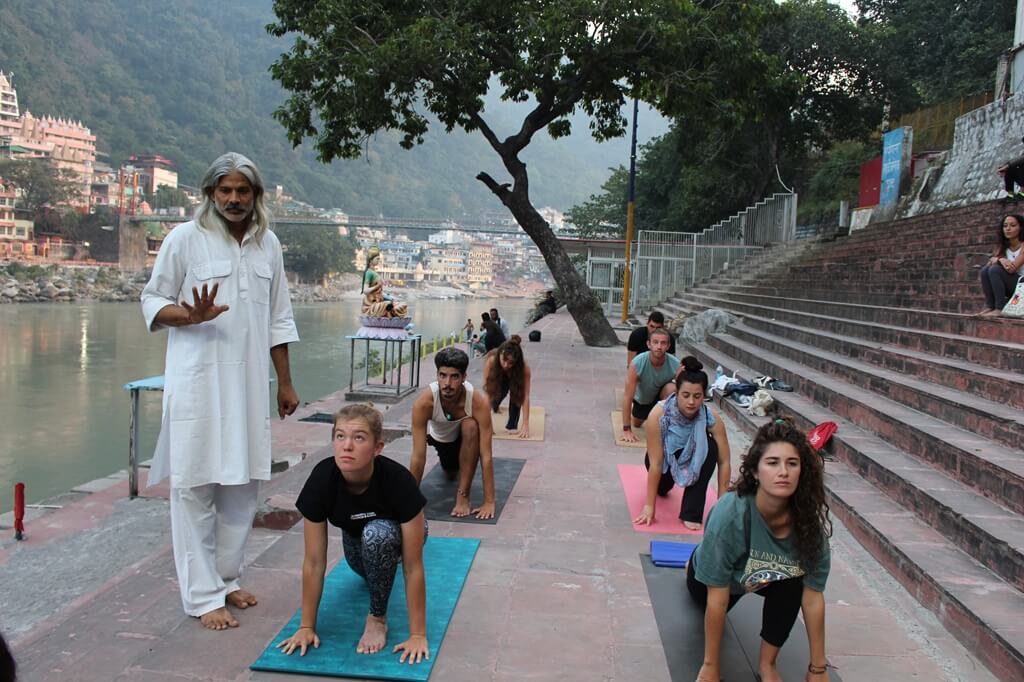 15 Hours Kundalini Asana Training with Certification – Kundalini Asana theory, practical and proper guidelines.
15 Hours Kundalini Asana Training with Certification – Kundalini Asana theory, practical and proper guidelines.
15 Hours Pranayama Training with Certification – Hatha Yoga Pranayama theory, practical and proper guidelines.
15 Hours Yoga Nidra Training with Certification – Yoga Nidra theory, practical and proper guidelines.
15 Hours Prana Vidya Training with Certification – Prana Vidya theory, practical and proper guidelines.
15 Hours Chakra Training with Certification – Kundalini Yoga Chakra theory, practical and proper guidelines.
Yoga Workshop – Yoga workshop for Kundalini, Kriya, Tantra for couples, Yoga Nidra, Chakra meditation and special meditation etc. practices.
Yoga Therapy – Yoga therapy for issues related to body, emotion and mind.
Study of Scriptures, Life and Philosophy (Darshan) – Study of religious texts for spiritual aspirants.
Yoga Counselling – Yoga counselling for health, clarity of mind, decision making, right perspective towards life and well-being.
Attention – The Yoga classes are to be modified as well according to the need of people. Therefore, if anyone has any special requirement, then please do mention, following which the required Yoga class can be organised.
A. Daily (Drop-In) Yoga Class (Offline or Online) - Asana, Pranayama and Relaxation.
Duration - Minimum 60 minutes and maximum up to 90 minutes or more according to the need.
B. Special Yoga Class (Offline or Online) - Asana, Pranayama, Mudra, Bandha, Shatkarma, Meditation, Tantra, Kundalini, Chakra, 3 Nadis, Tantra for couples, Swara Yoga, Prana Vidya (ancient energy healing), Reiki, Yoga Nidra (commonly called Nidra Yoga) and Yoga Cleansing etc. The classes are in the forms of -
 15 Hours Hatha Asana Training with Certification - Theory, practical and proper guidelines.
15 Hours Hatha Asana Training with Certification - Theory, practical and proper guidelines.Duration - Varied days (2, 3, 4, 5, 6, 7, 8, 9, 10, 11, 12……days onwards). One session minimum 30 minutes and in exceptional cases maximum up to 90 minutes or more.
Attention - The Yoga classes are to be modified as well according to the need of people. Therefore if anyone has any special requirements please do mention following which the required Yoga class can be organised.
Counselling – Counselling means conversation with/listening to an individual or group of individuals in need of physical, mental, emotional and psychic needs and providing her/him/them right theoretical and practical guidelines according to various Yogic disciplines.
Yogic discipline explained – It includes Tantric and Yogic practices, observance of silence, fasting as suggested, prescribed food and more importantly considerable change in daily life style.
 How do we do – The counselling is done mostly on an individual basis but if required it is also done to a group of individuals who share some common interests. This service is done on prior request only.
How do we do – The counselling is done mostly on an individual basis but if required it is also done to a group of individuals who share some common interests. This service is done on prior request only.
How does this work –
Duration – 1 hour maximum, nevertheless the counselling may be stretched beyond if needed.
Instructor to Yoga Counselling – Yogabhyasi (Yoga Practitioner) Rohit Kumar.
The daily schedule for all Yoga programs in India as well as abroad is tentative and subject to change according to need. All classes are held mostly for 6 days in a week.
Tentative times (IST - Delhi, Mumbai) for Yoga Teacher Training Courses - 6 days in a week.
Tentative times (IST - Delhi, Mumbai) for Retreats - 6 days in a week.
Tentative times (IST - Delhi, Mumbai) for Yoga Classes and Special Yoga Classes - Decided on individual basis upon the request made. The classes are 6 days in a week.
*The daily schedule for all Yoga programs abroad will be different according to the place the invitation is made and accepted.
 1. Fee structure without any Inclusion - Hereunder are the fee structures without any inclusion except study and education -
1. Fee structure without any Inclusion - Hereunder are the fee structures without any inclusion except study and education -
Yoga Teacher Training Course (Onsite or Online) Fee (excluding transfer charges/commissions) - The fee is for the complete course including certification.
Yoga Retreat (Onsite or Online) Fee (excluding transfer charges/commissions) – The fee is for the complete retreat.
Yoga Class (Onsite or Online) Fee (excluding transfer charges/commissions) -
A. Daily (Drop-In) - 2100/- Indian rupees only per session for International, NRI and 1000/- INR only per session for Indians.
B. Special Yoga Class –
 15 Hours Hatha Asana Training with Certification – 31500/- Indian rupees only for International, NRI and 15000/- INR only for Indians.
15 Hours Hatha Asana Training with Certification – 31500/- Indian rupees only for International, NRI and 15000/- INR only for Indians.C. Discourse on Tantra and Yoga - Please follow Discourse on Tantra and Yoga.
2. Fee structure with inclusions - The fee structure for all Yoga programs with inclusion will be different according to the place the invitation is made and accepted. This we mention when we agree to organize any Yoga program in this category.
 Registration – Please write to Rohit Kumar via email – (ROHITRAMDIRI@YAHOO.IN) or Whatsapp at (+91-9472215331) in details. If there is such availability, then he will request you to observe the required formalities including the fee structure.
Registration – Please write to Rohit Kumar via email – (ROHITRAMDIRI@YAHOO.IN) or Whatsapp at (+91-9472215331) in details. If there is such availability, then he will request you to observe the required formalities including the fee structure.
Deposit – For (Onsite or Online) Yoga Teacher Training Courses/retreats/classes/therapy/workshop/study of scriptures, Life & philosophy (Darshan)/counselling, a non-refundable total amount plus bank charges/commissions is required to confirm the candidature. To pay for any Yoga programs in India, please follow Payment. To pay for any Yoga programs outside India, we will send you the details of the bank account to make payment after we receive your registration.
Something Important – Regarding fee, International means people living/working outside India, NRI means Non-resident Indians living/working outside India and Indian means people living/working in India.
Cancellation of the registration for the Yoga program – For the time being we do not provide this facility. Therefore, properly decide before you deposit the amount for any of the Yoga program.
Remaining Payment – In the exceptional situation, if there is any remainder payment then that can be made before the Yoga program takes place or during the concerned Yoga program.
Address (INDIA)
Sanatana Yog Sandesh
Ved Bhoomi Residency, Balaknath Temple, Balaknath Rd, Near Manzil Hostel, Upper Tapovan, Rishikesh
Uttarakhand, India, Postal Code – 249192
Contact – +91-9472215331
Direction –
Address (UK)
7 The Rowans
Woodbine Close
Waltham Abbey
Essex, EN93R, UK
Contact – +44-7940 710182
Direction –
Associated with
Working hours
Mon: 7:00am – 9:00pm
Tue: 7:00am – 9:00pm
Wed: 7:00am – 9:00pm
Thu: 7:00am – 9:00pm
Fri: 7:00am – 9:00pm
Sat: 7:00am – 9:00pm
Sun: 7:00am – 9:00pm
© 2023. Sanatana Yog Sandesh. All Rights Reserved.